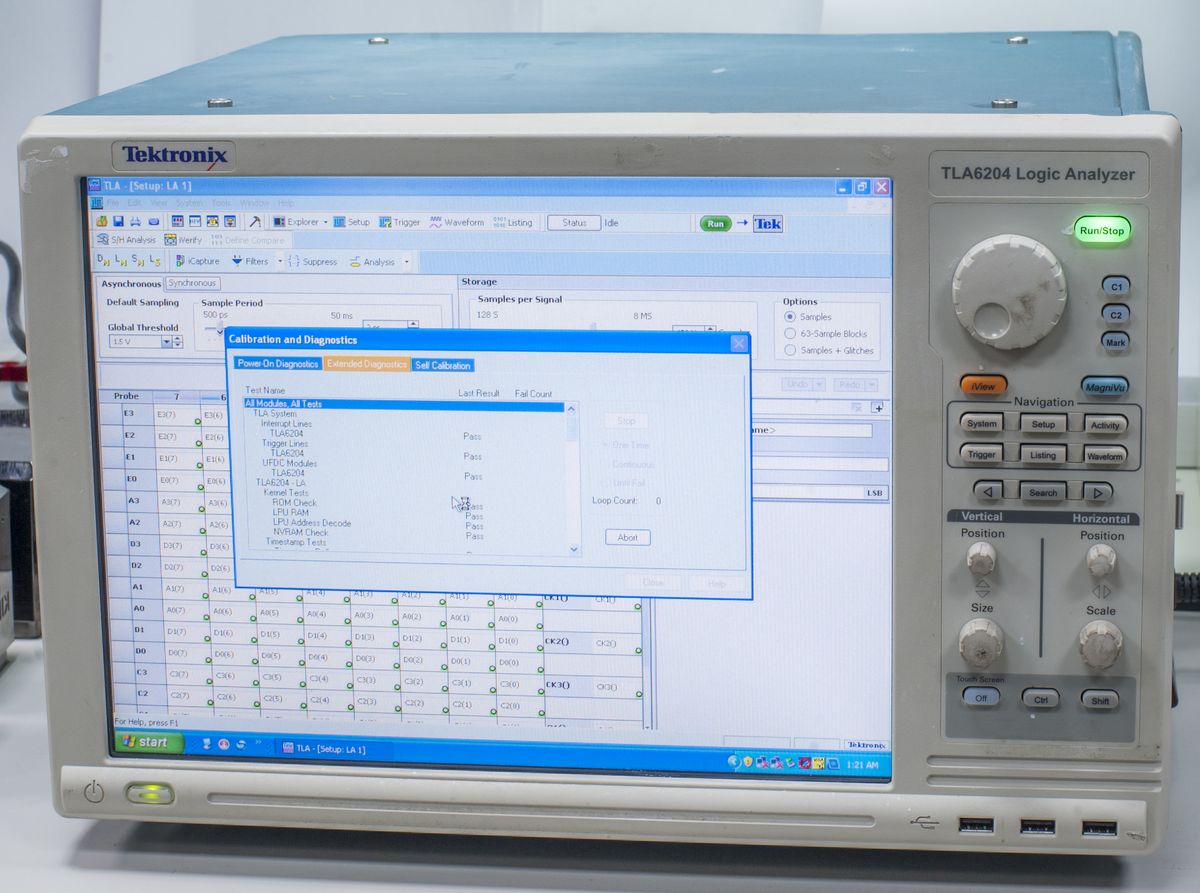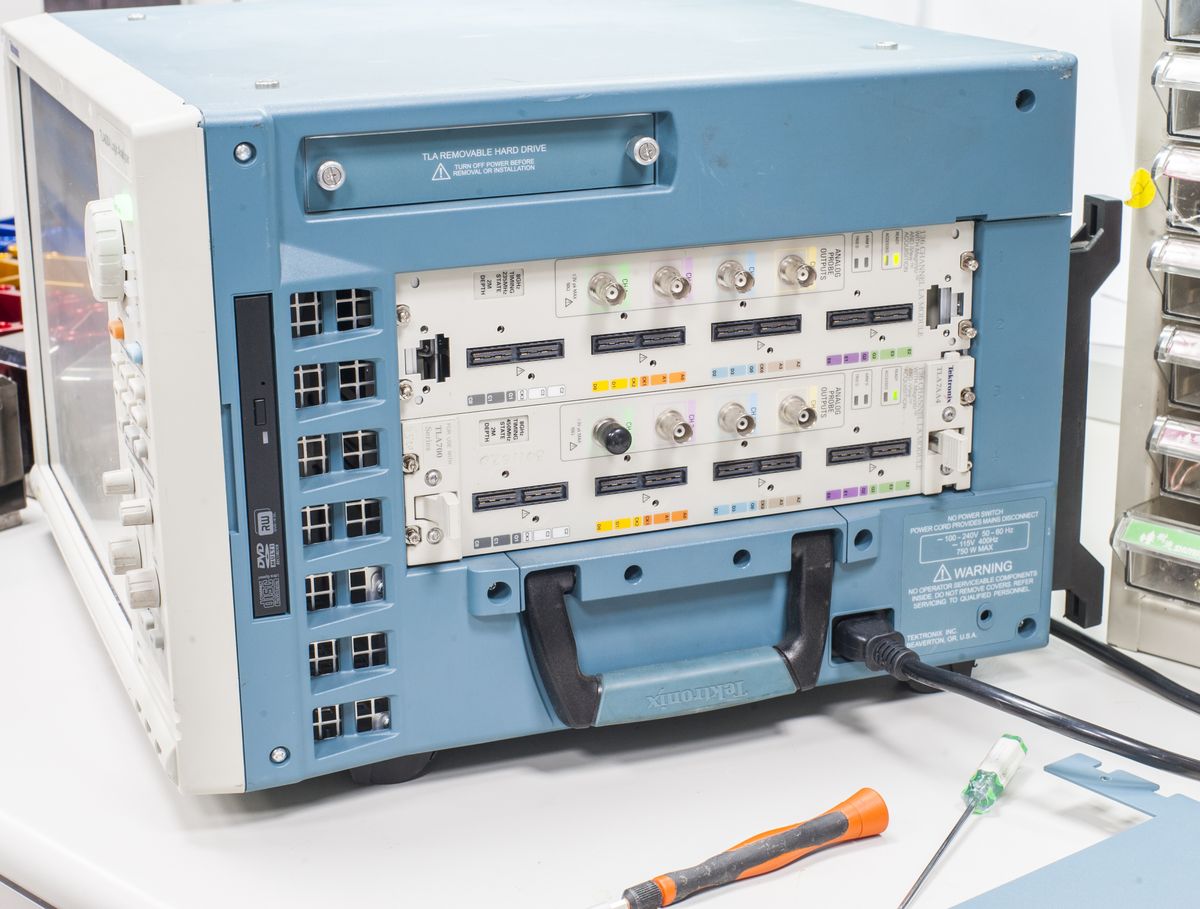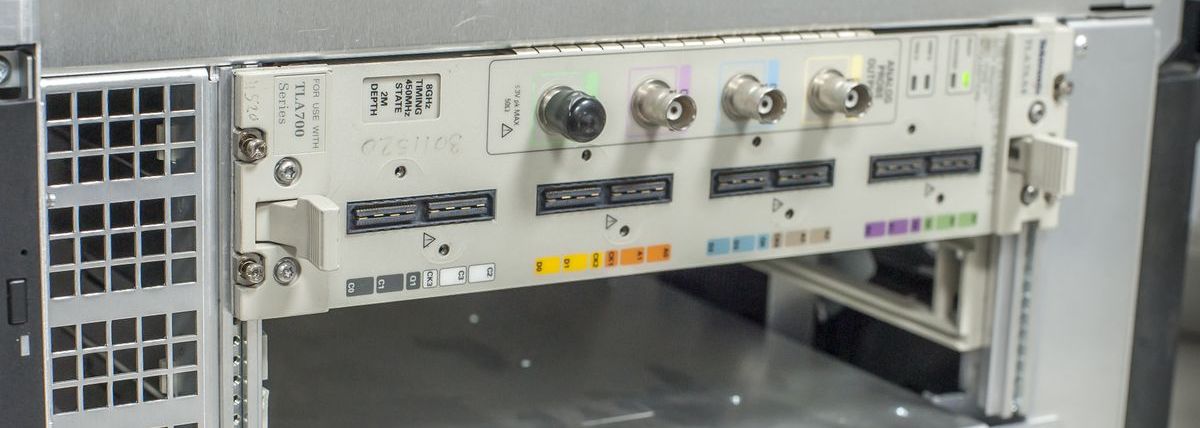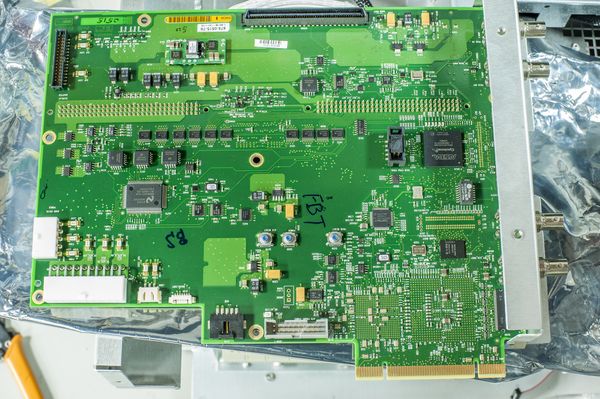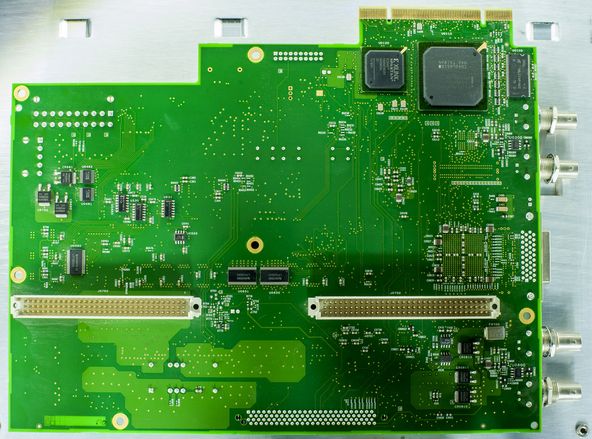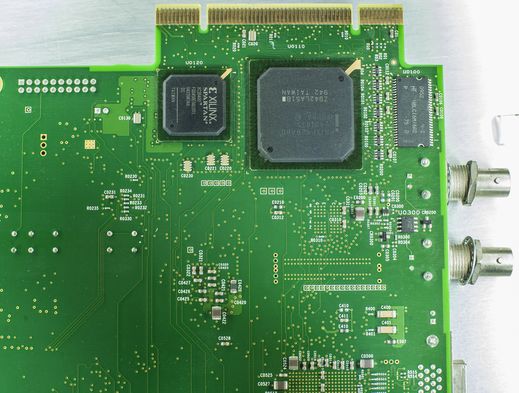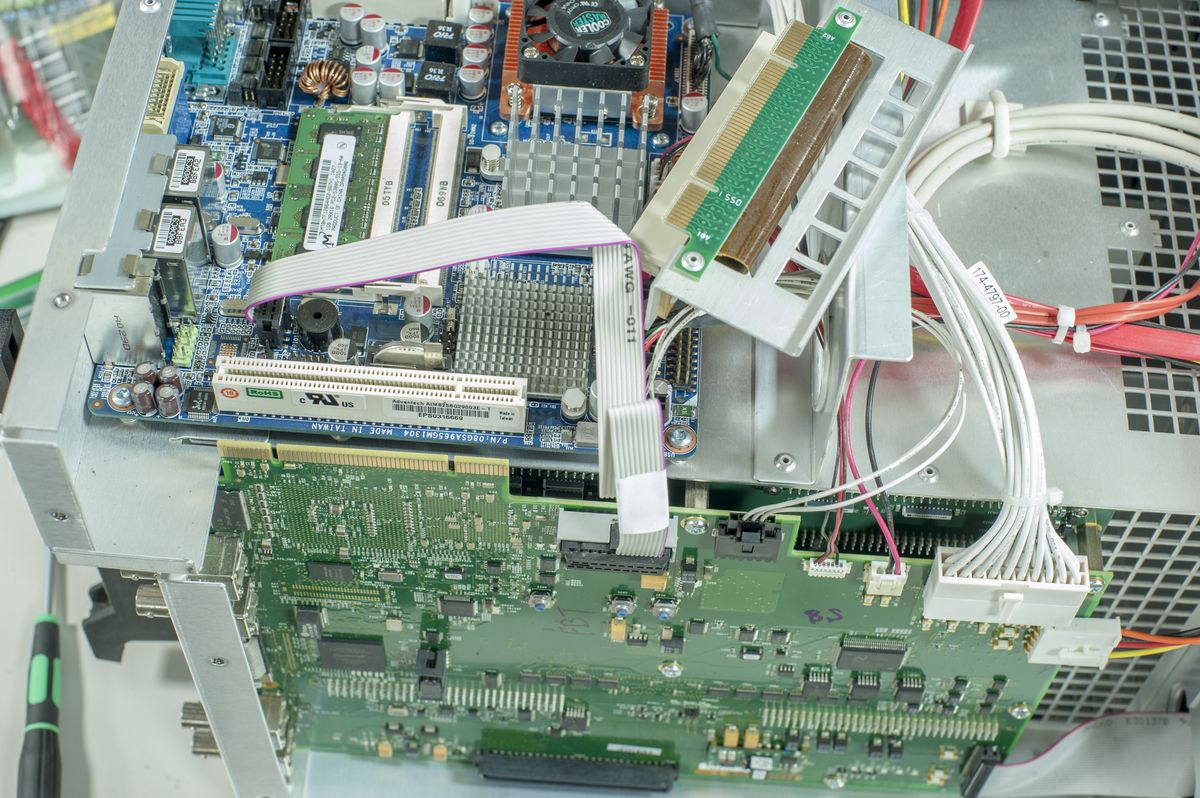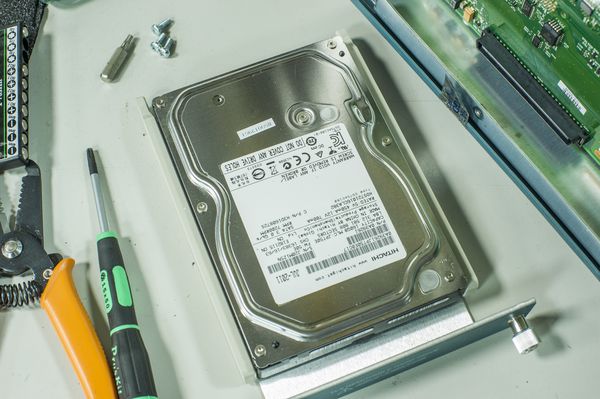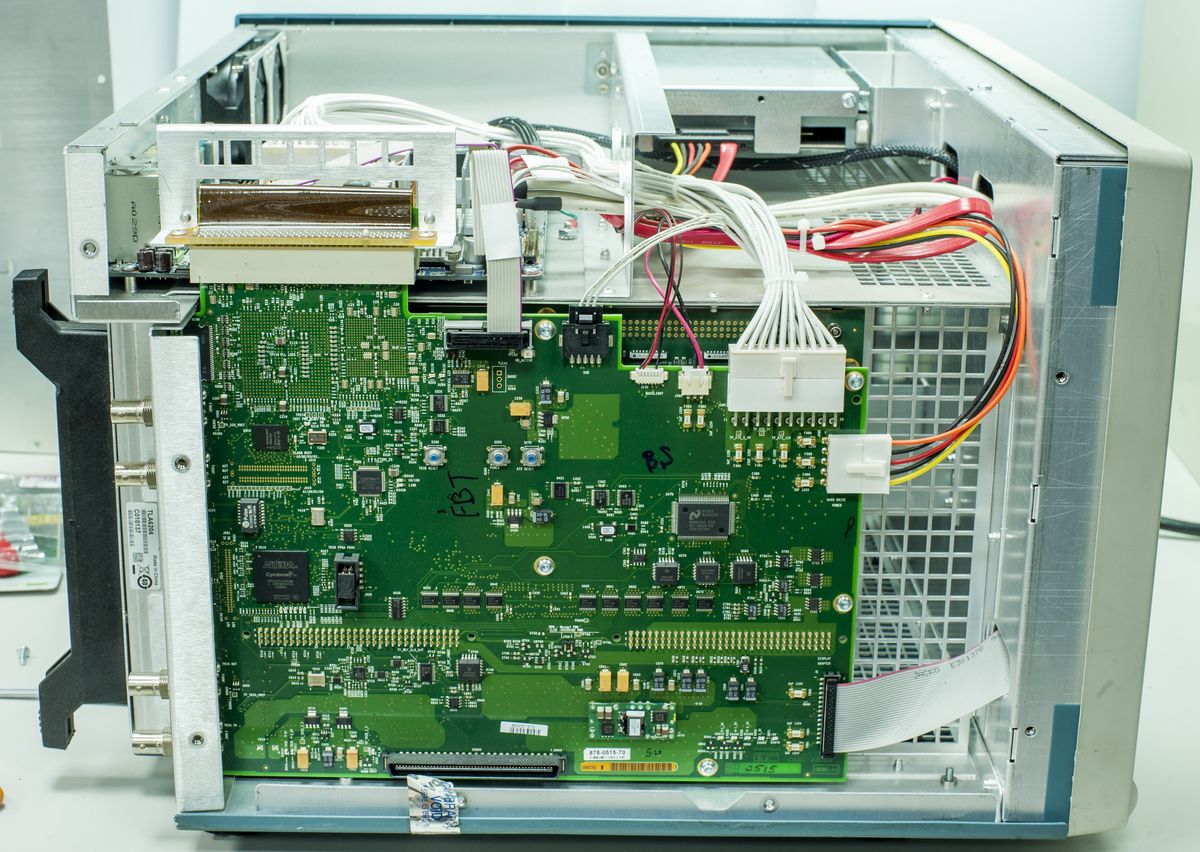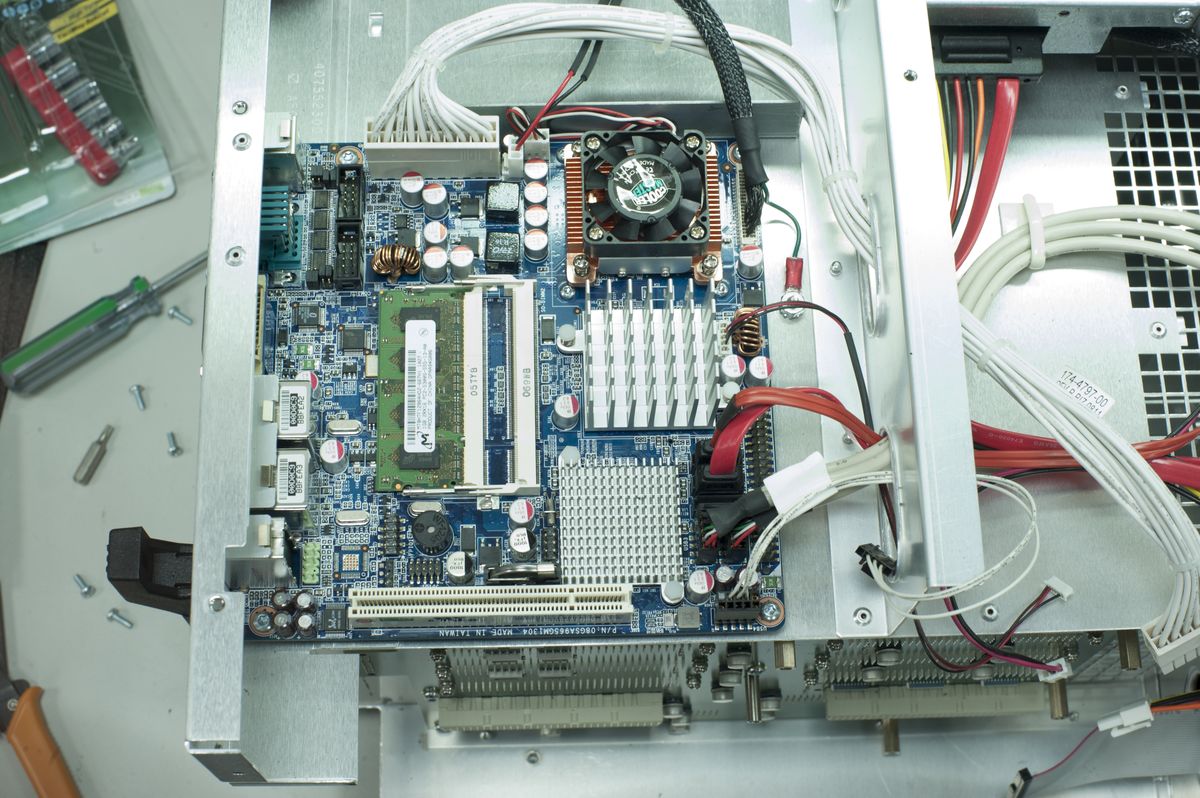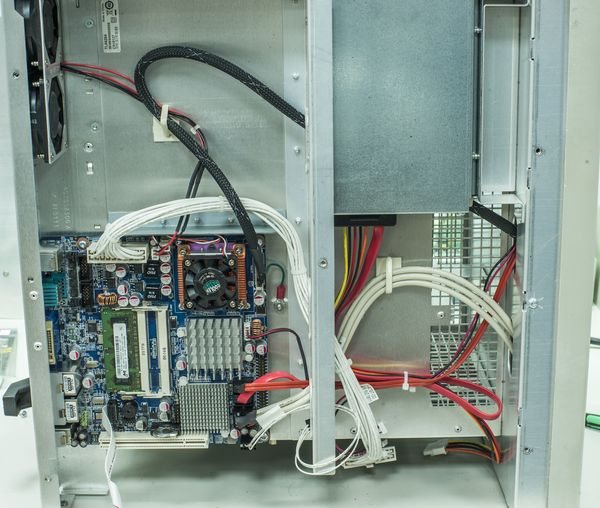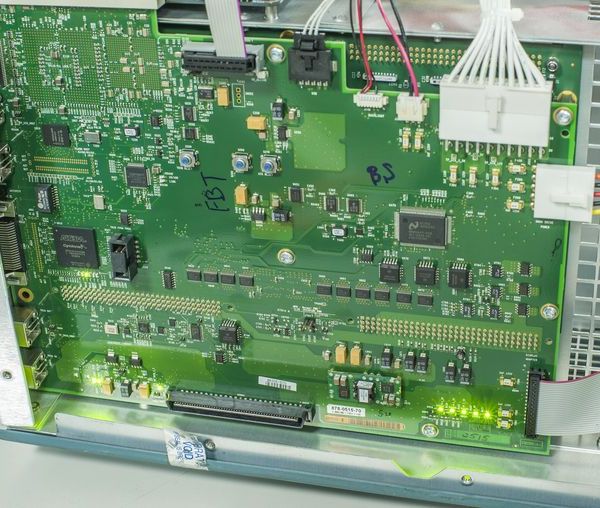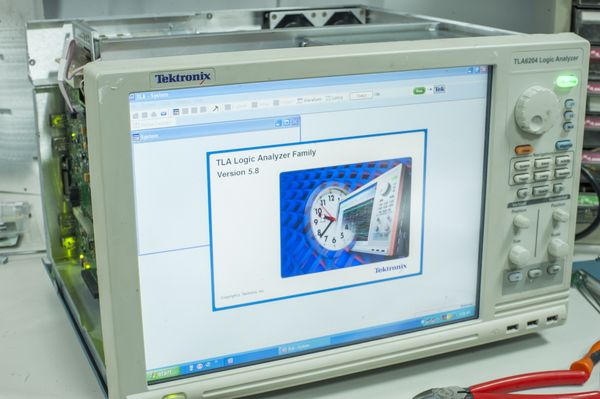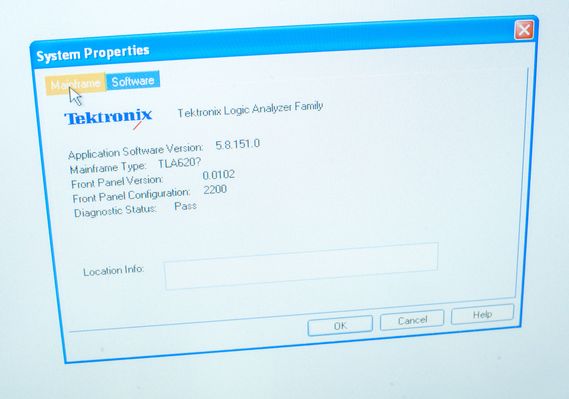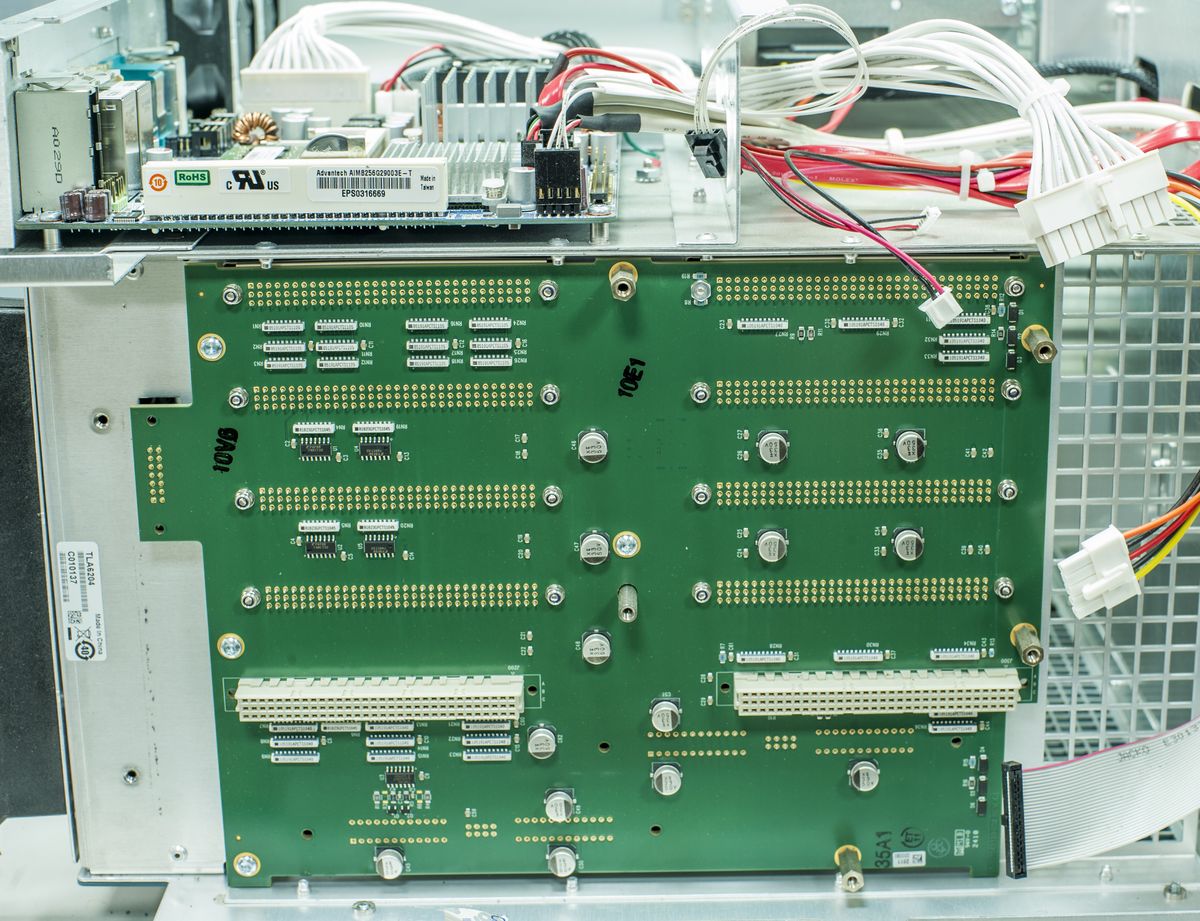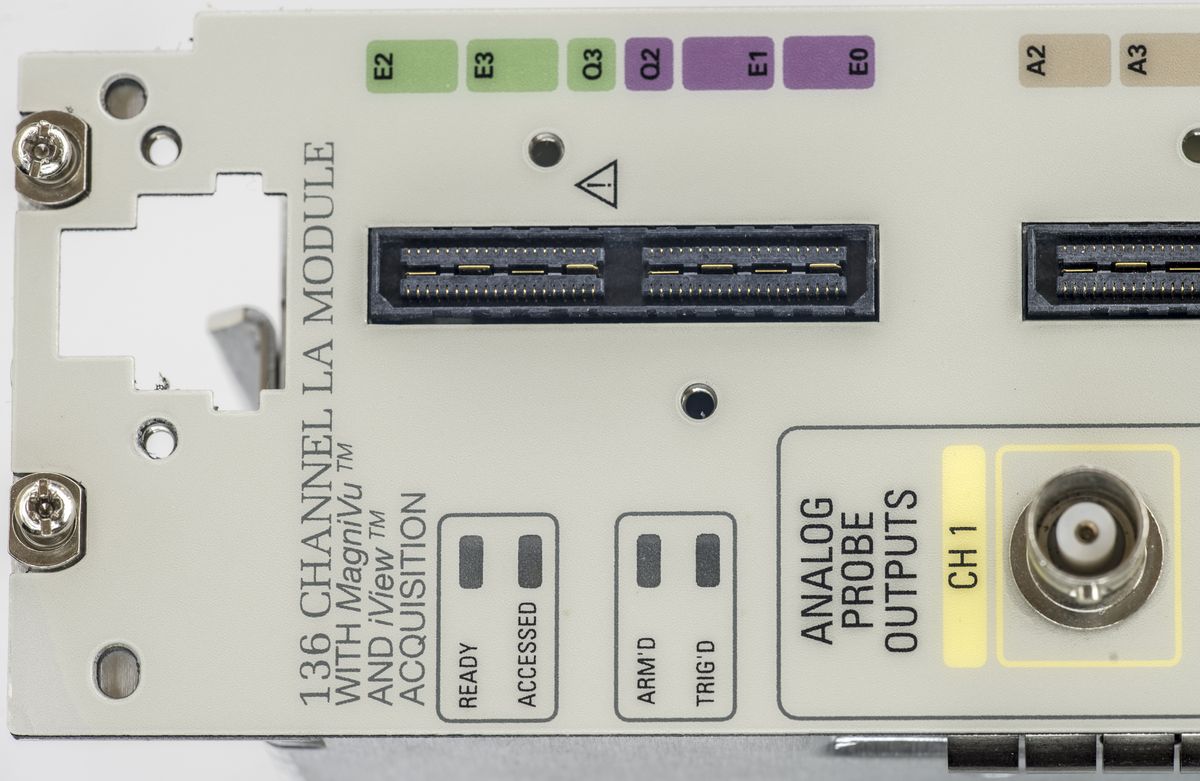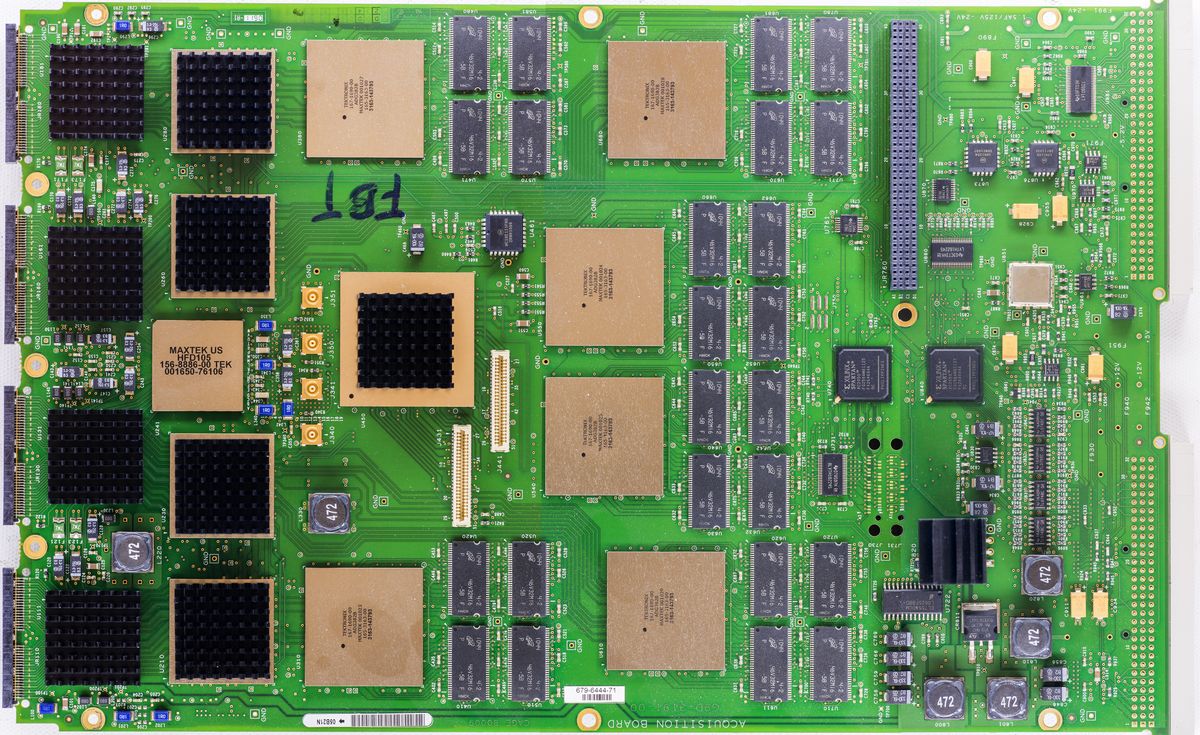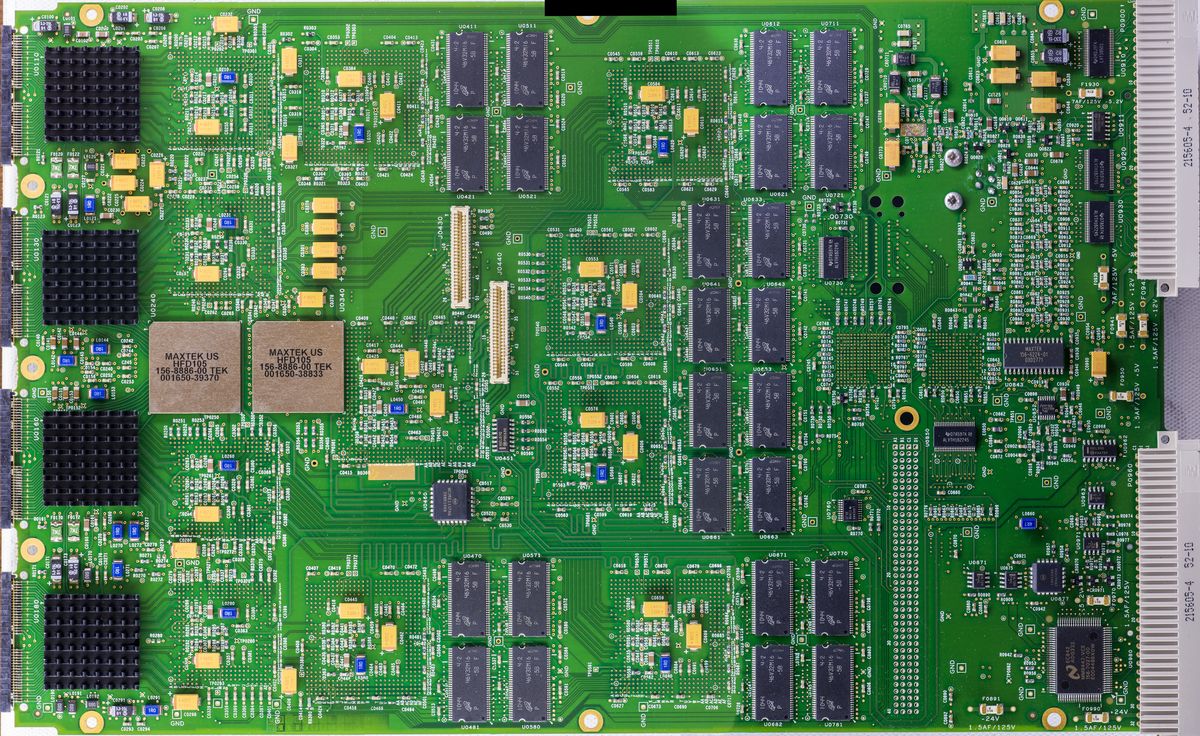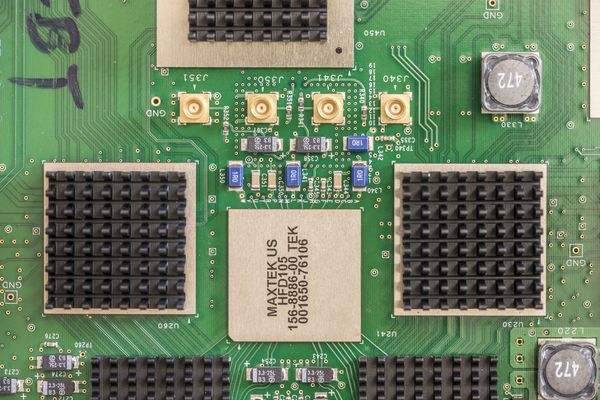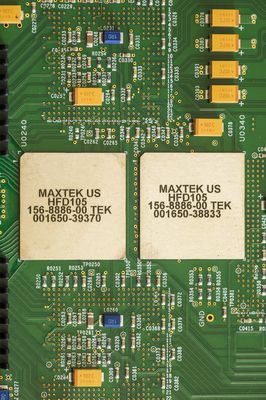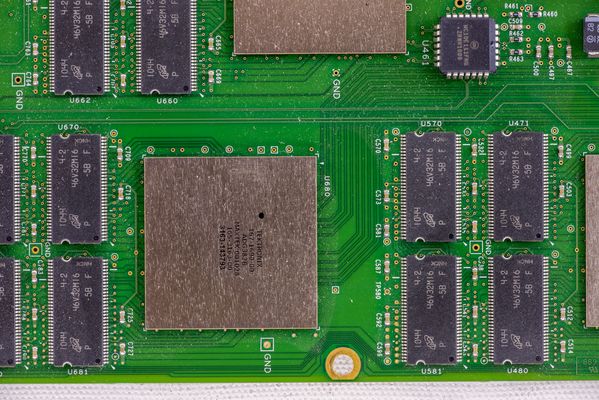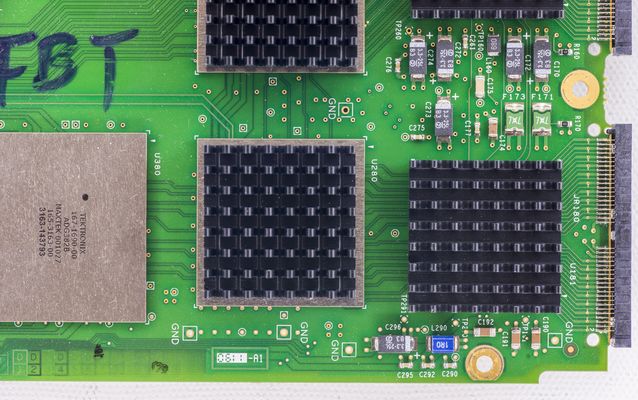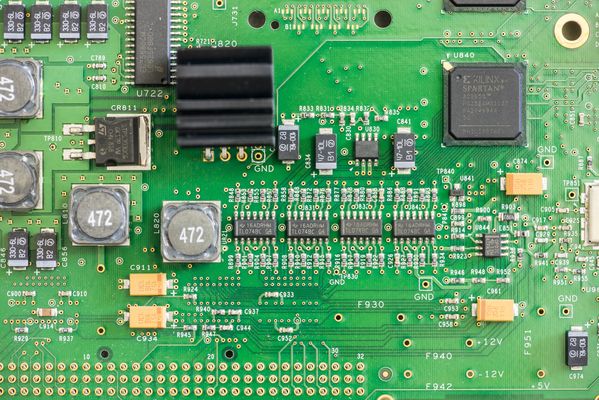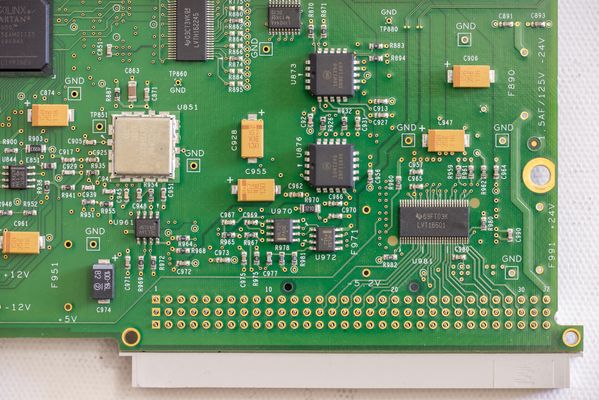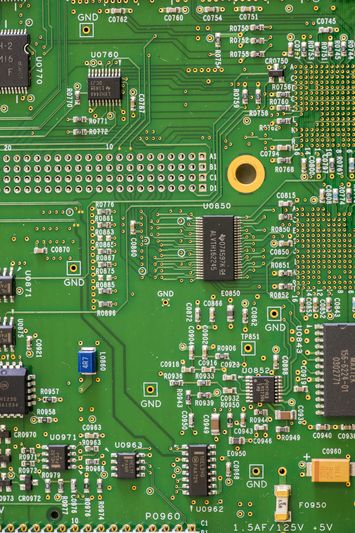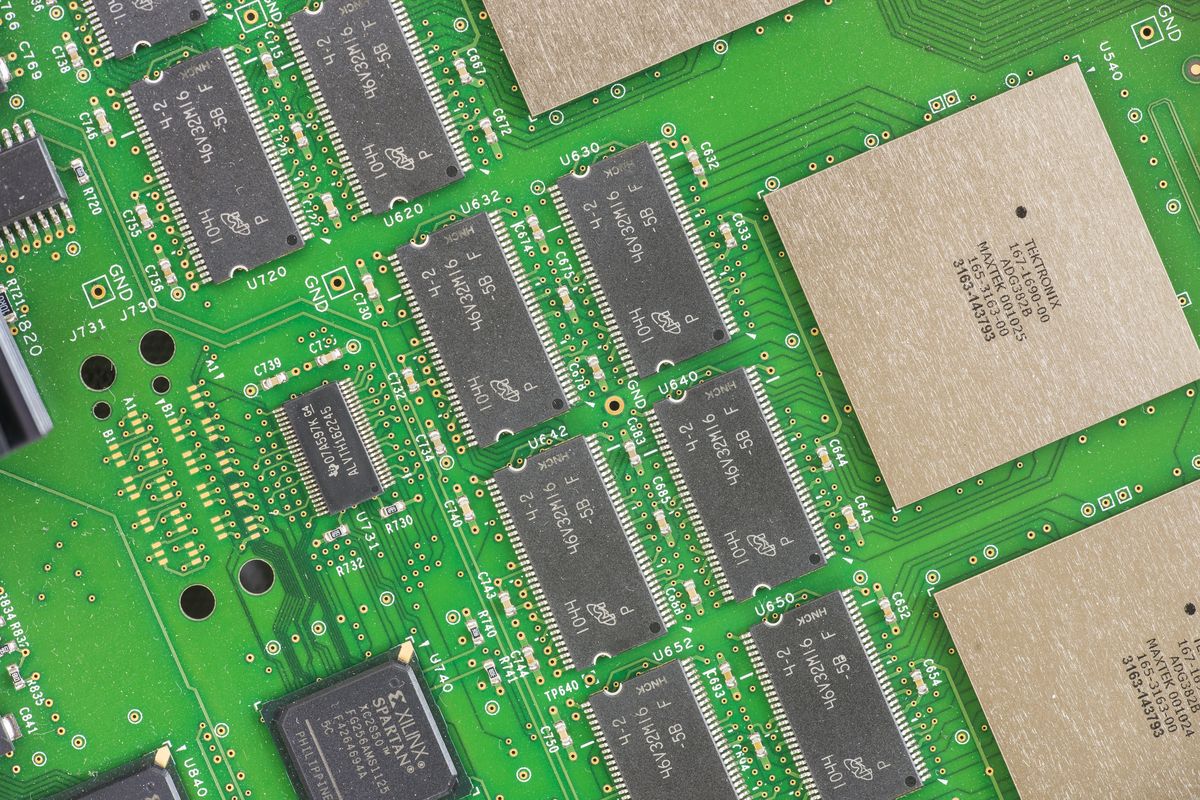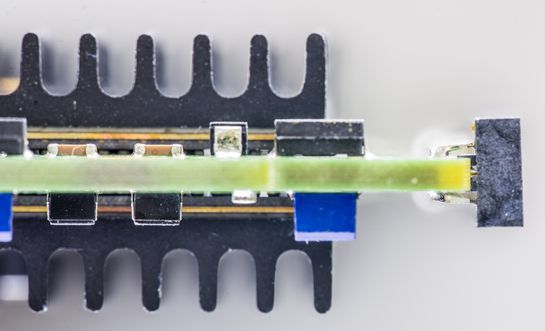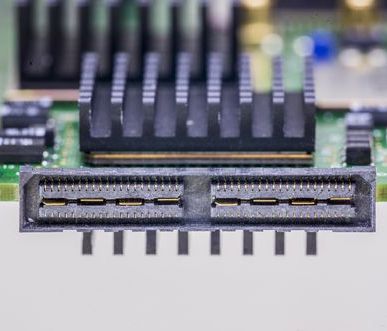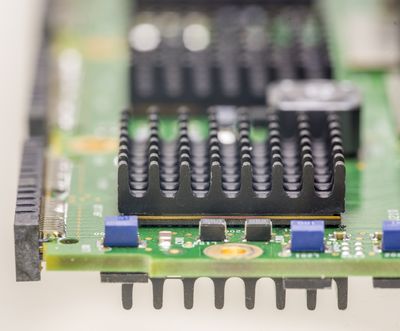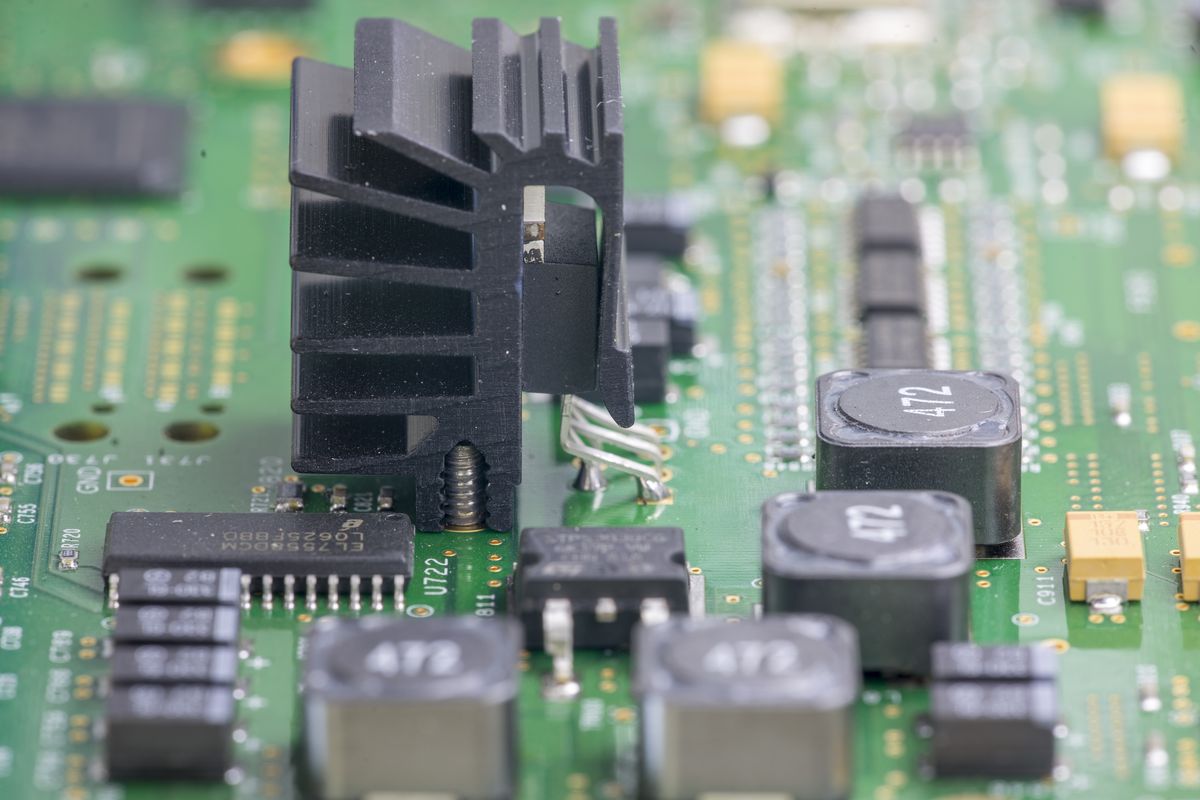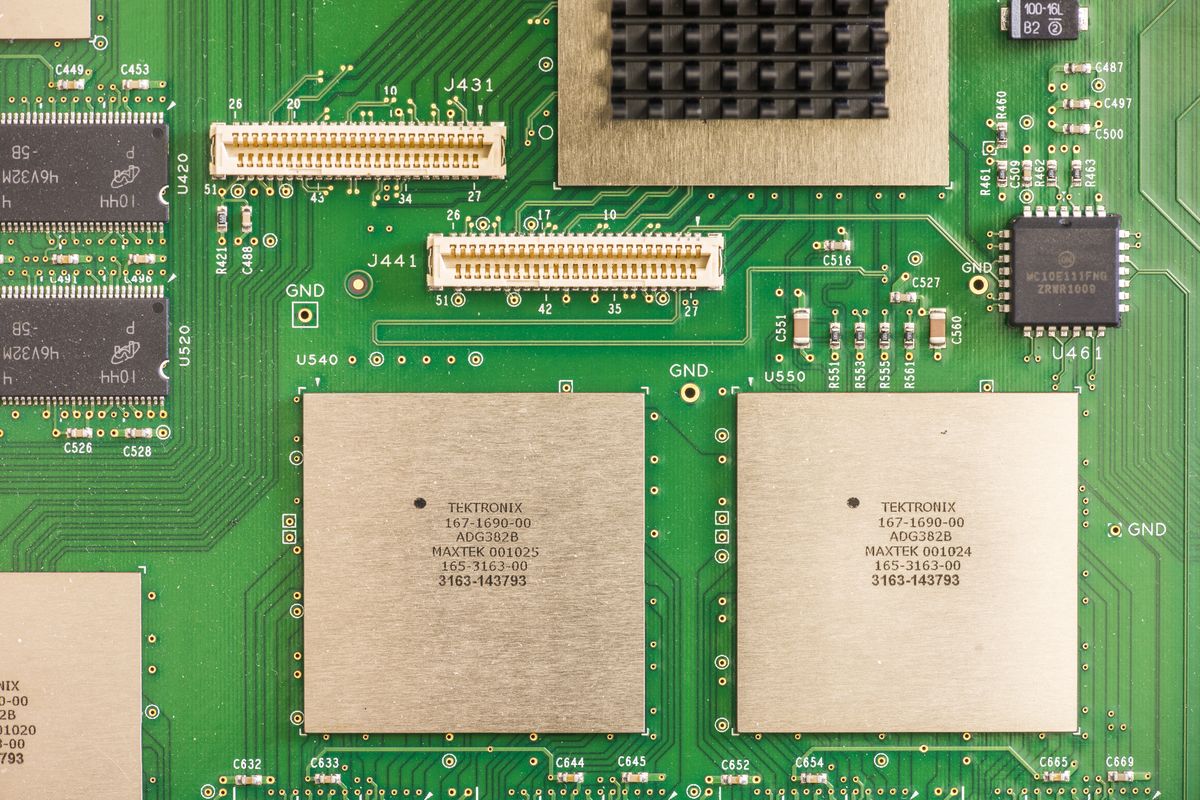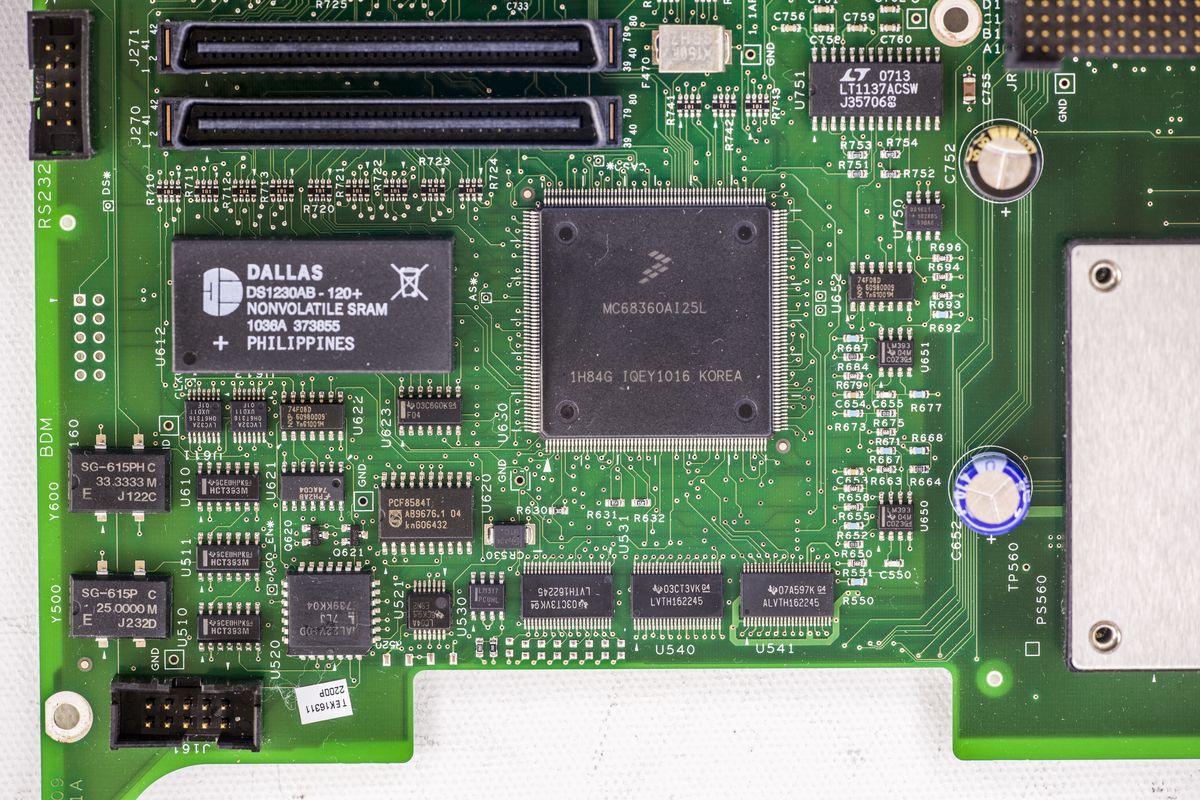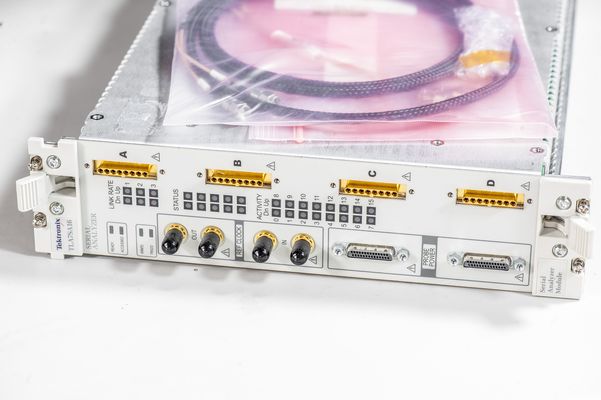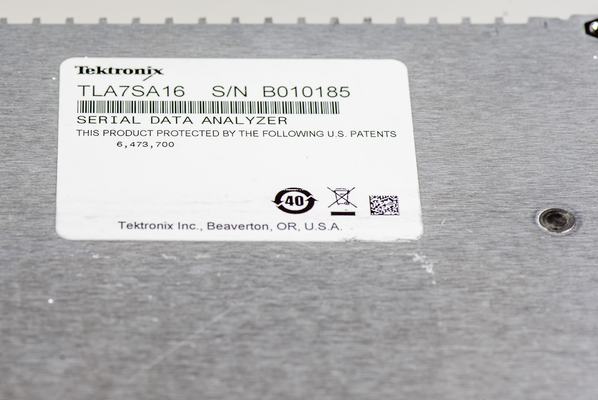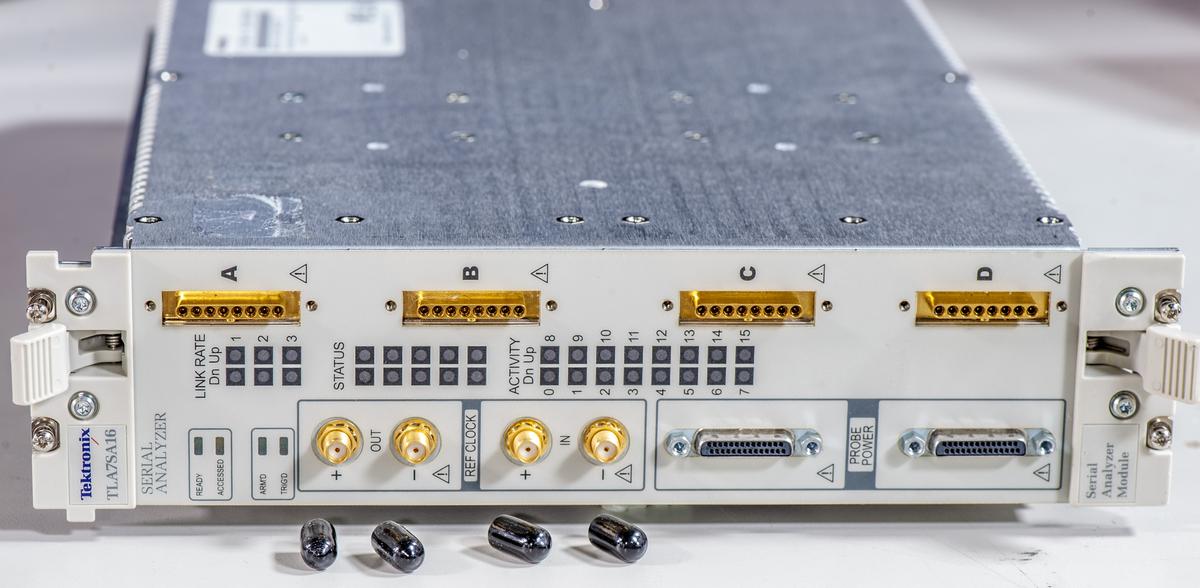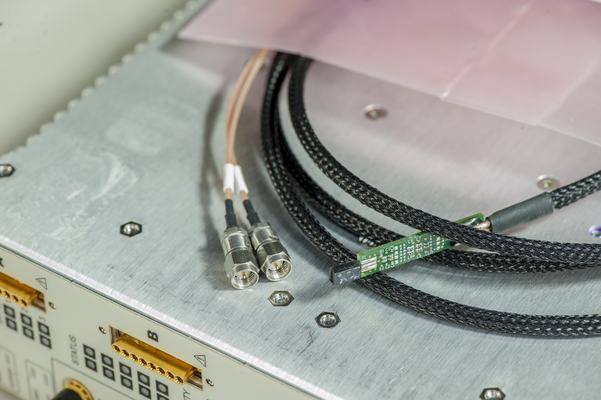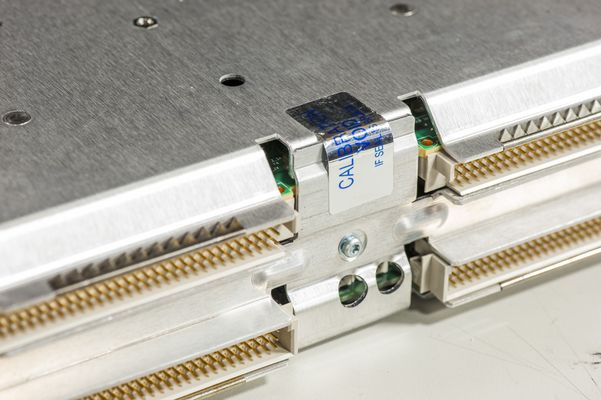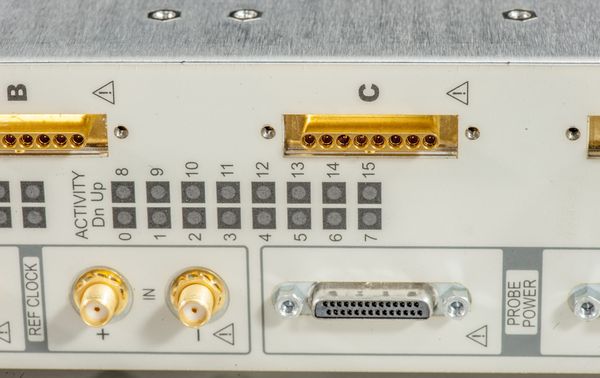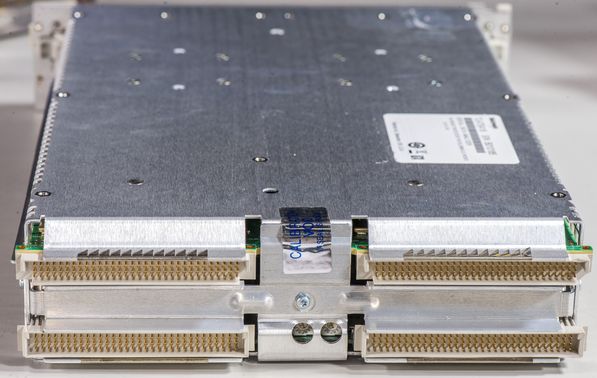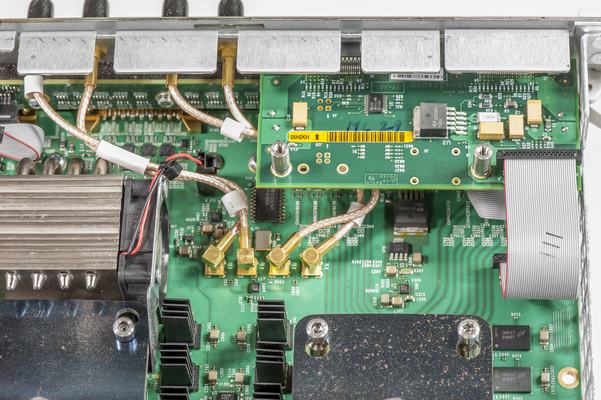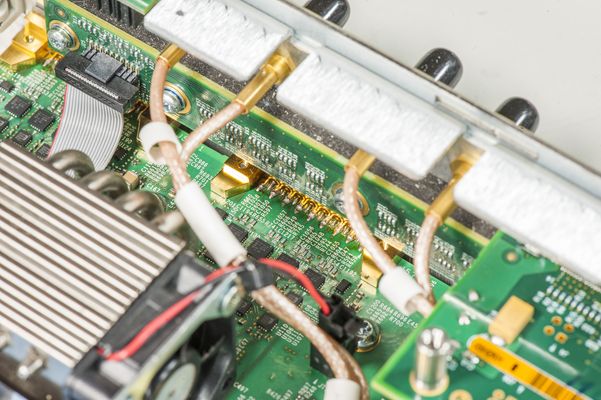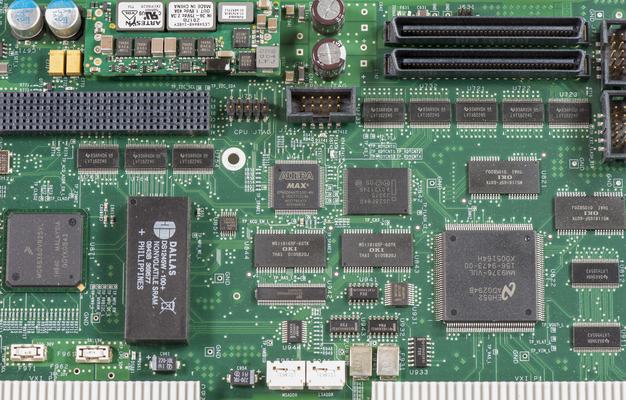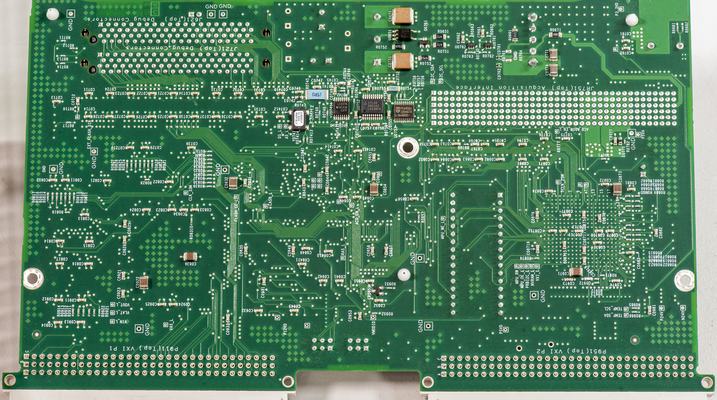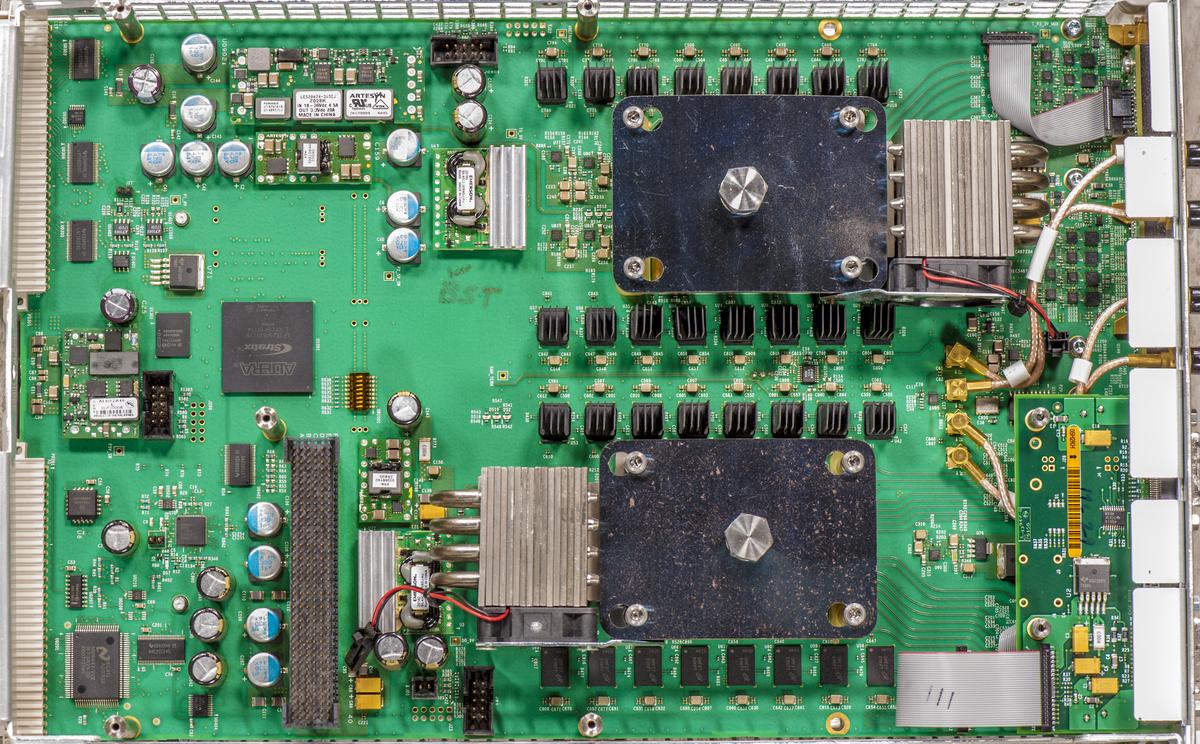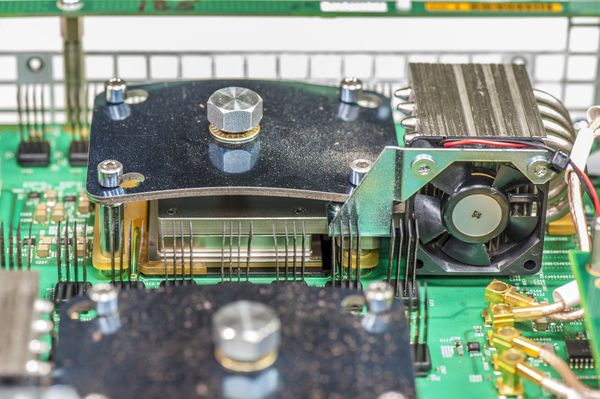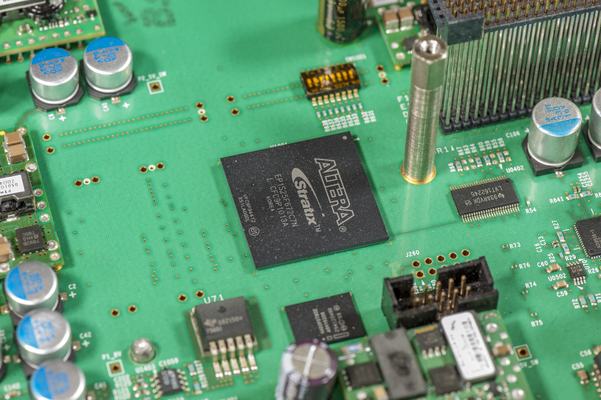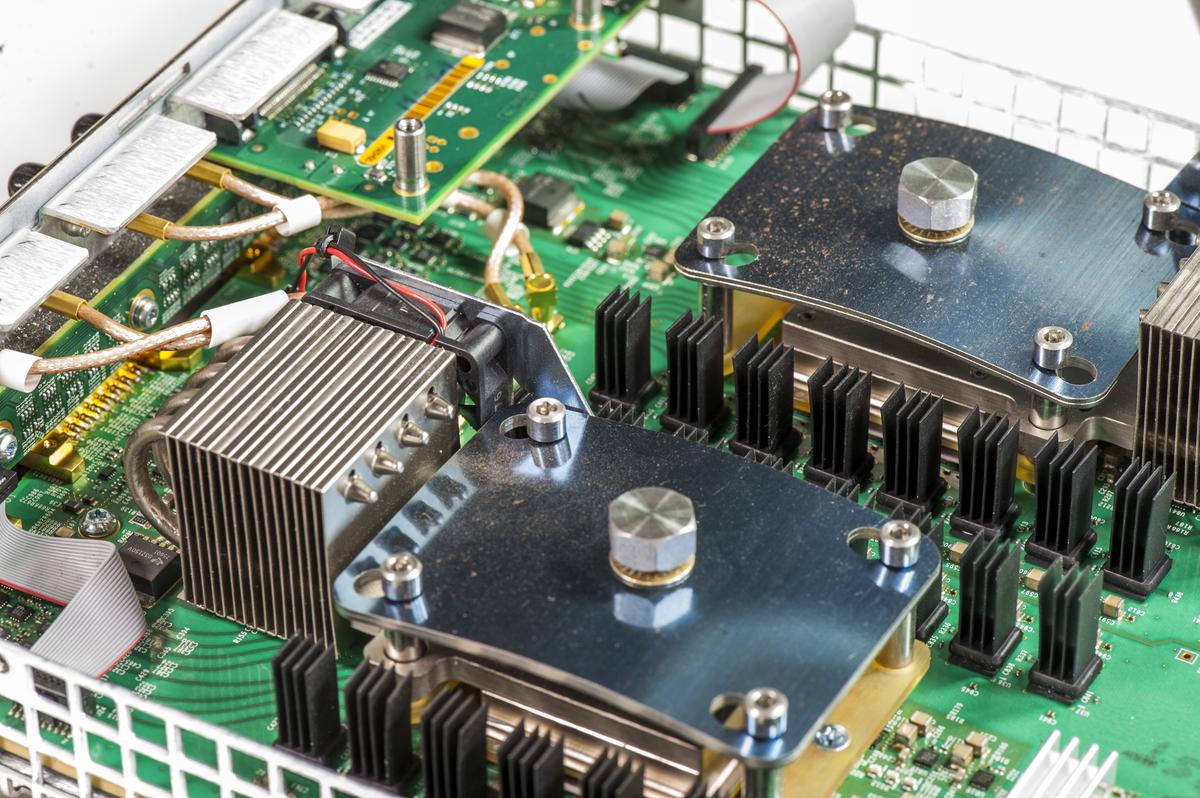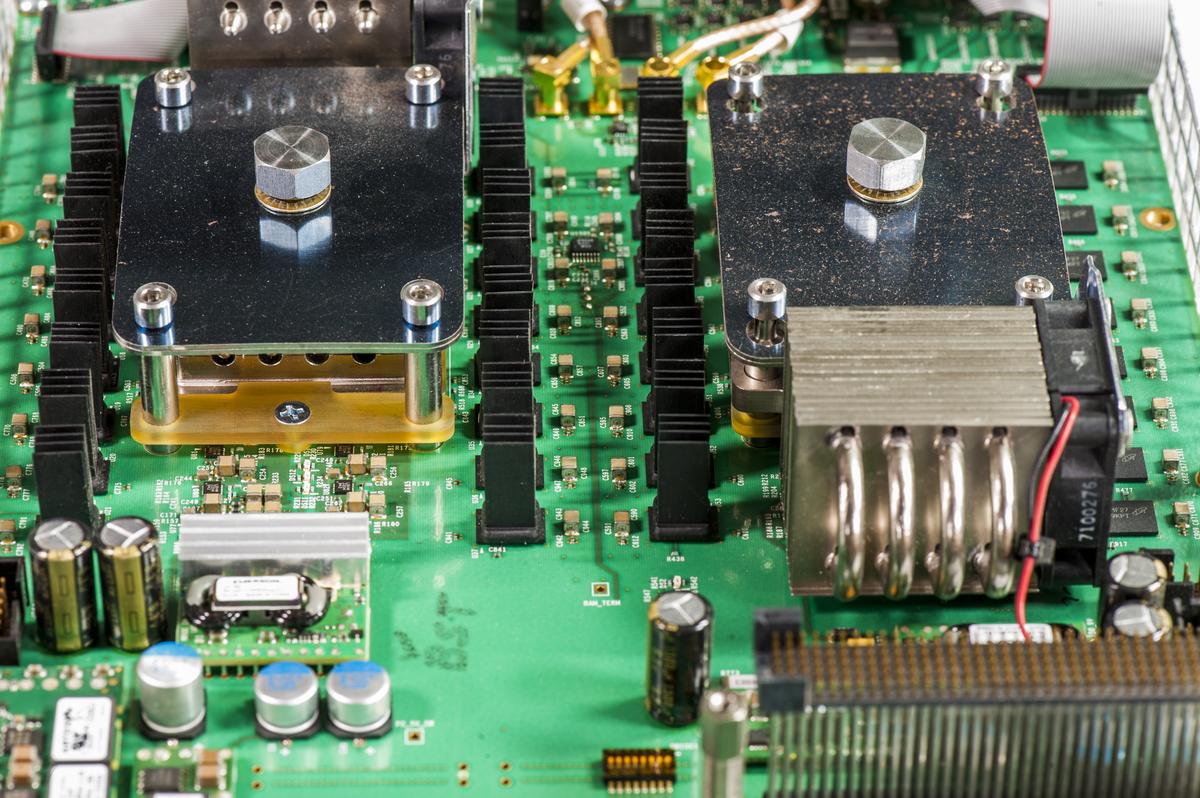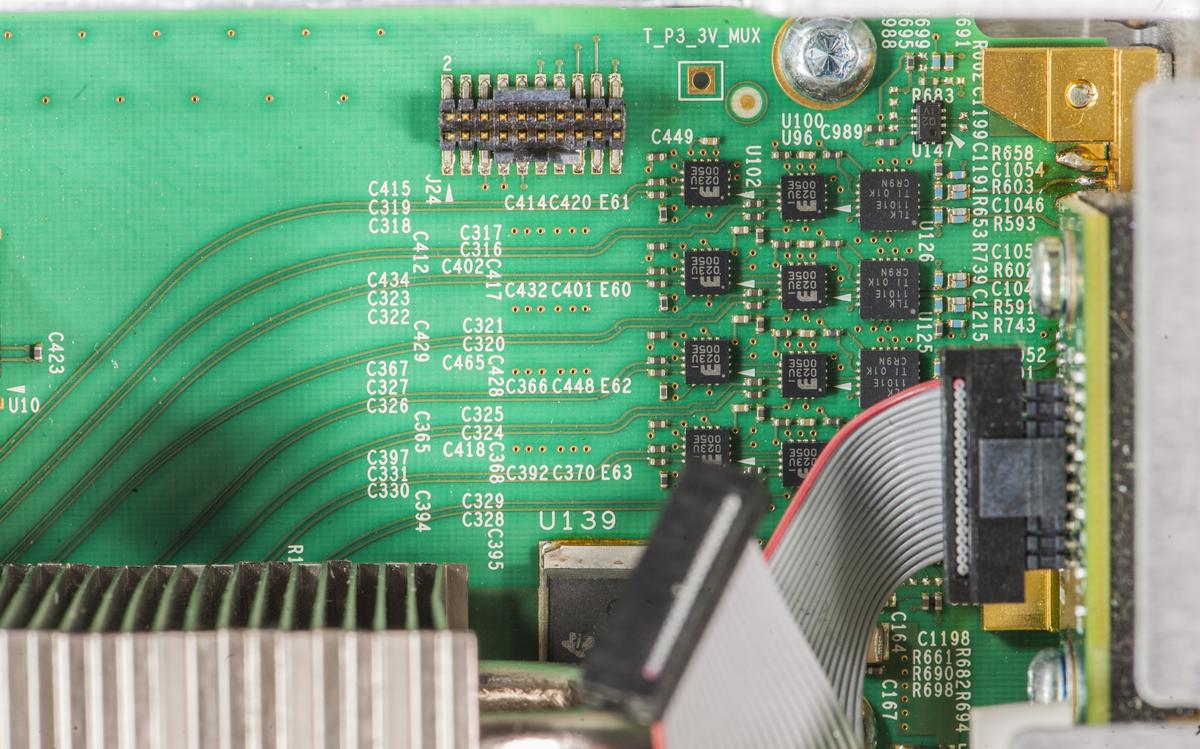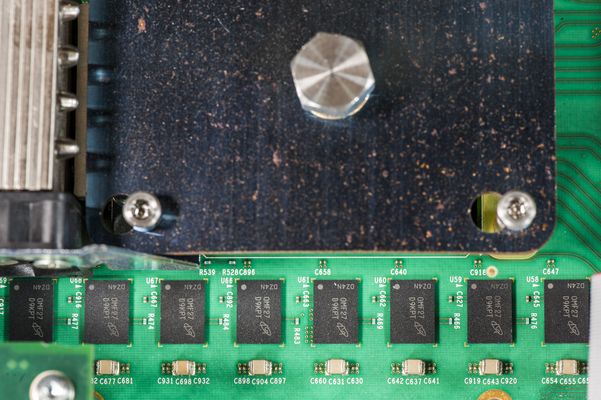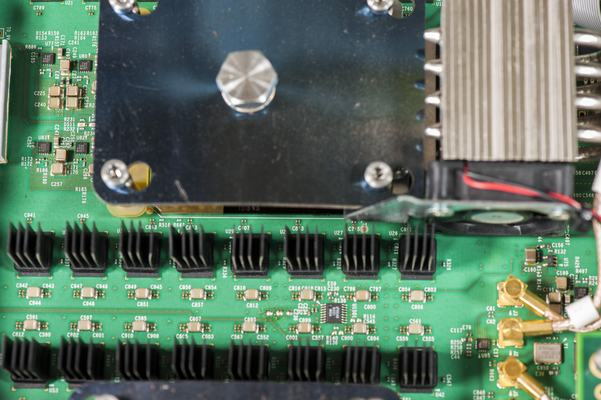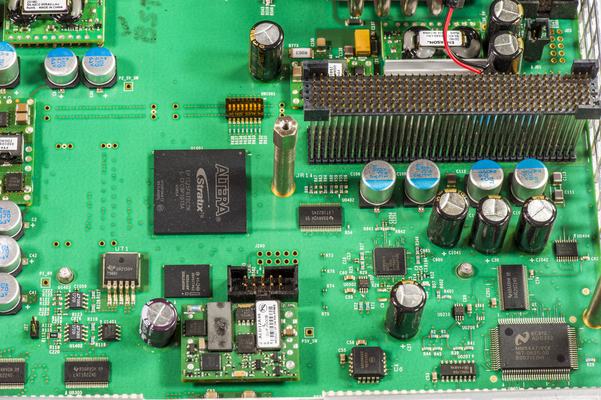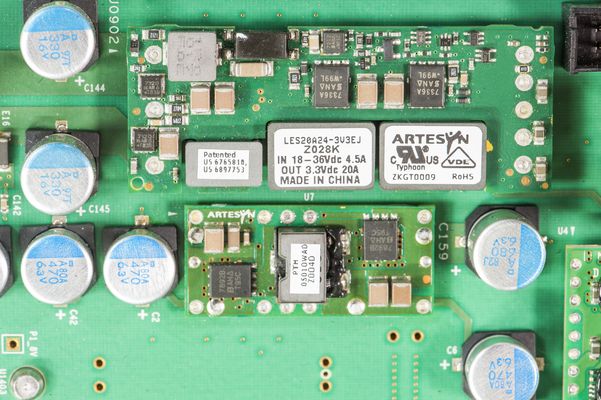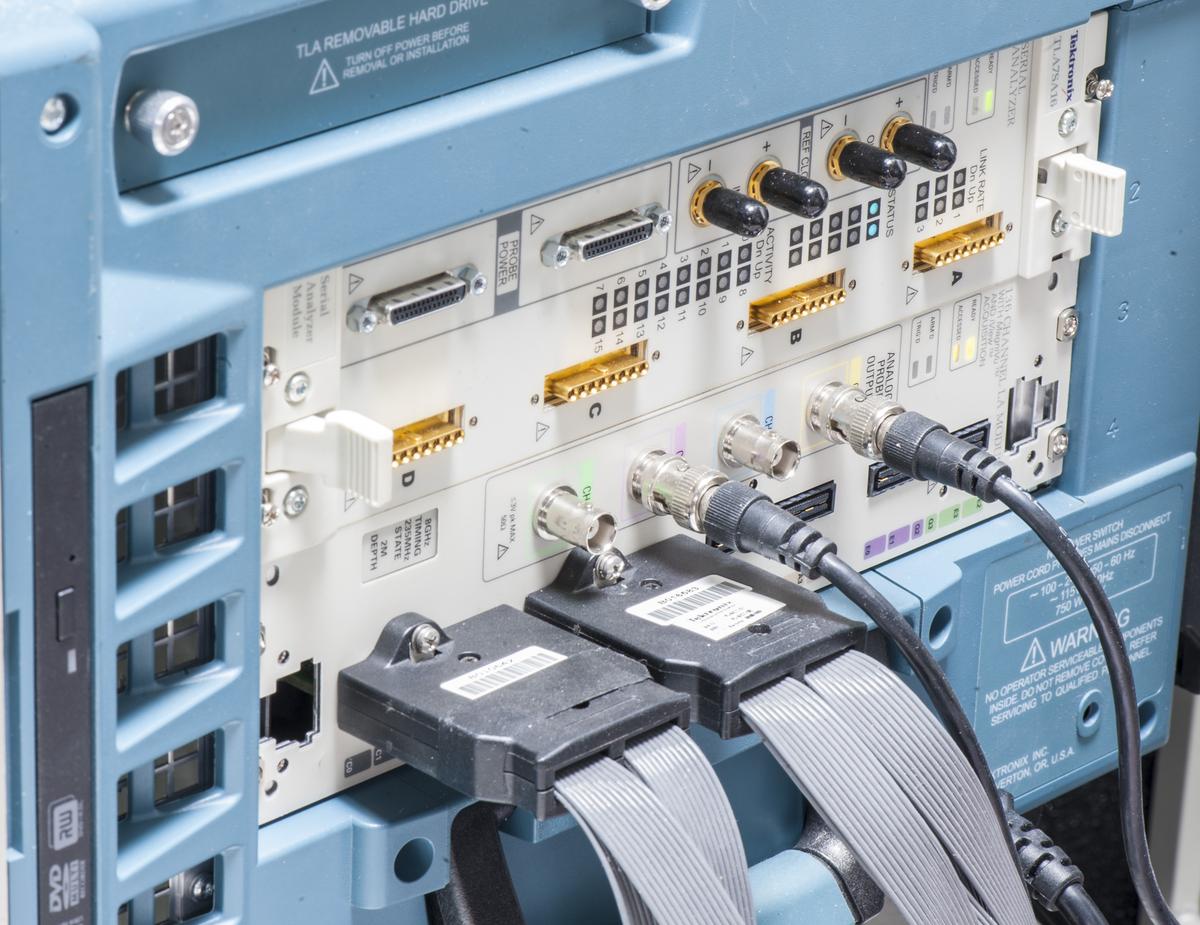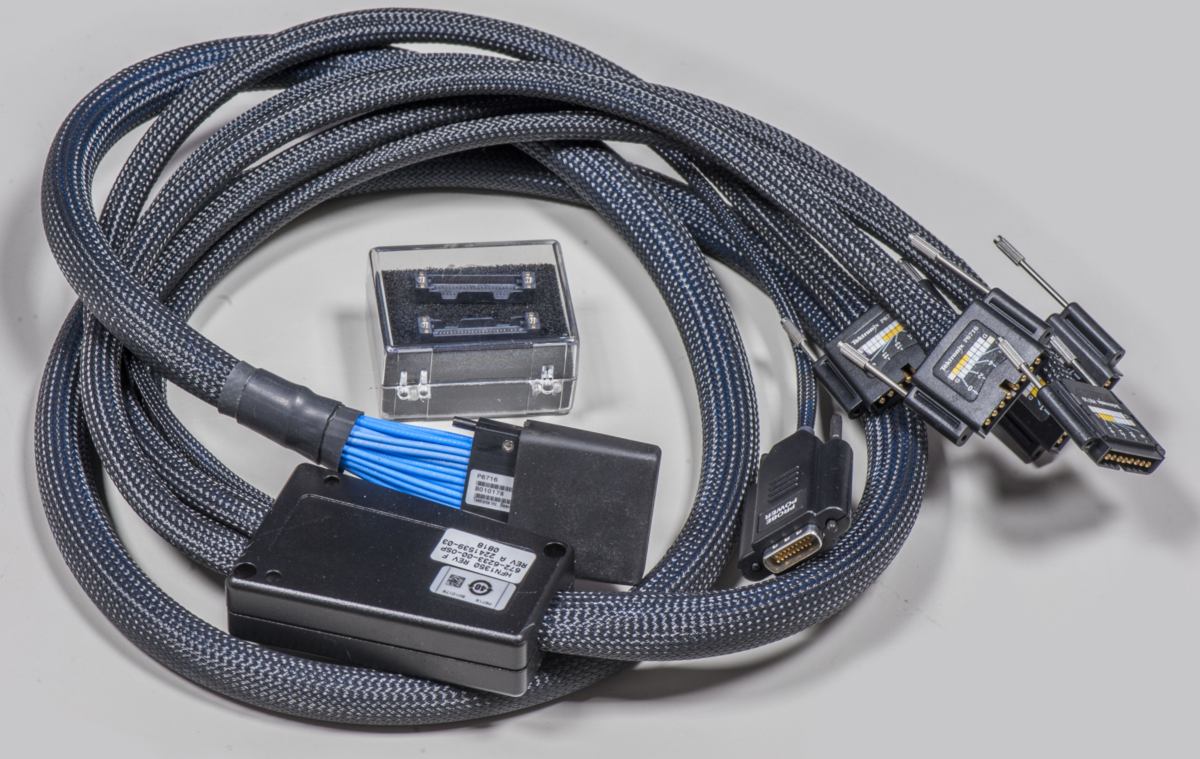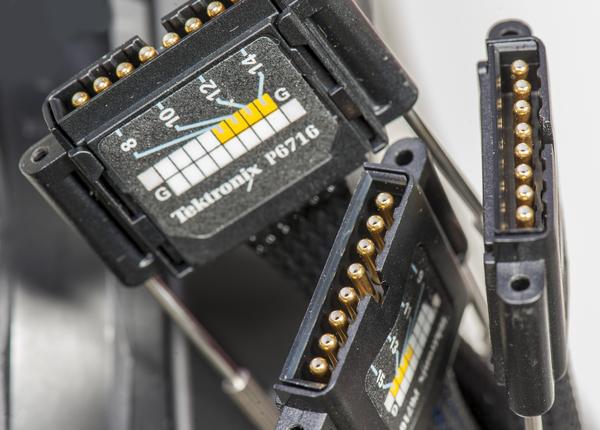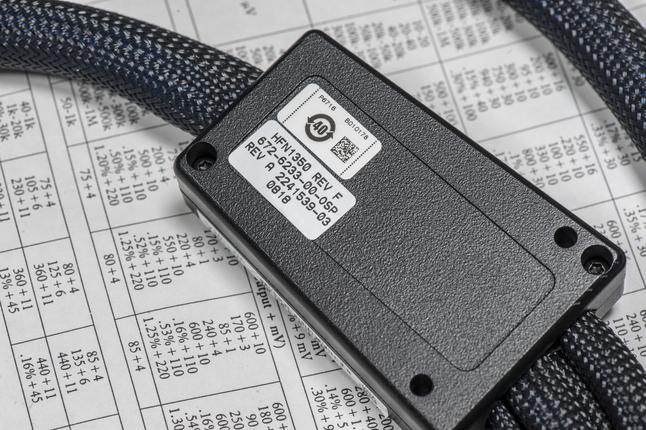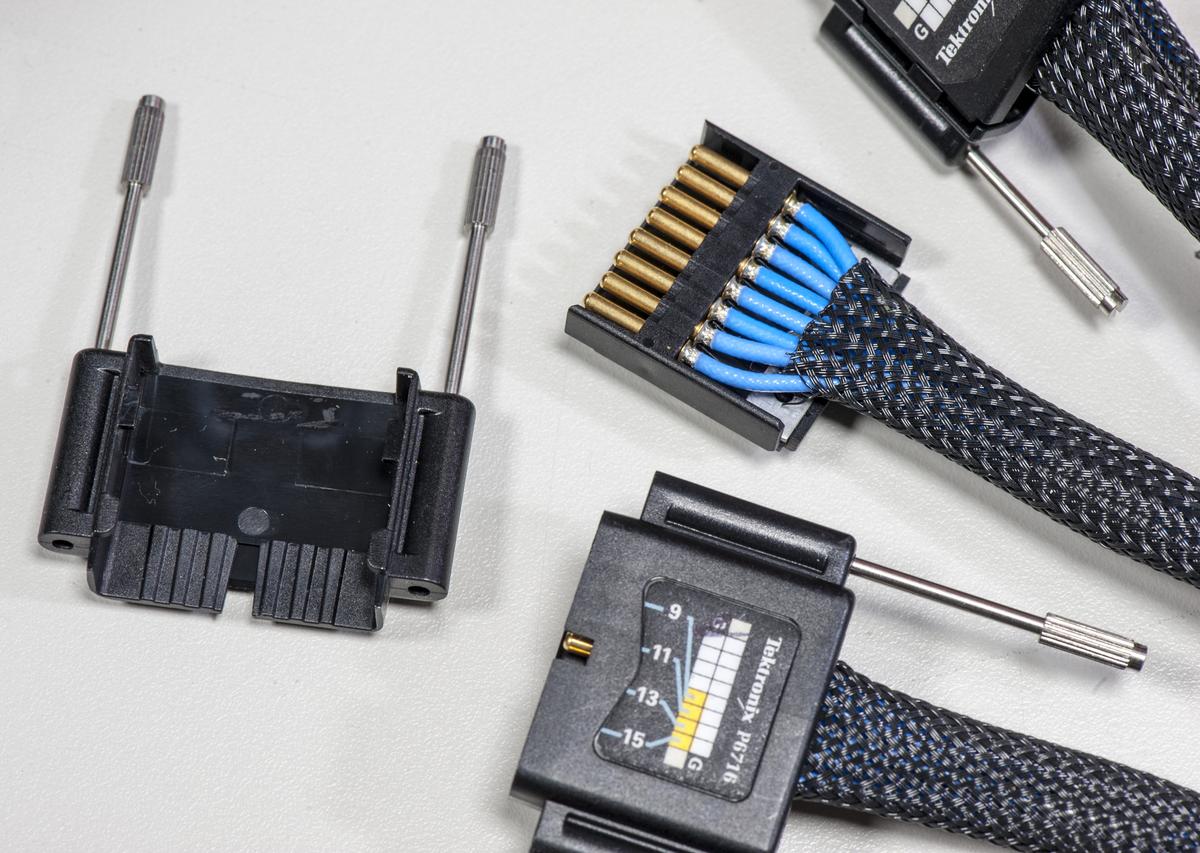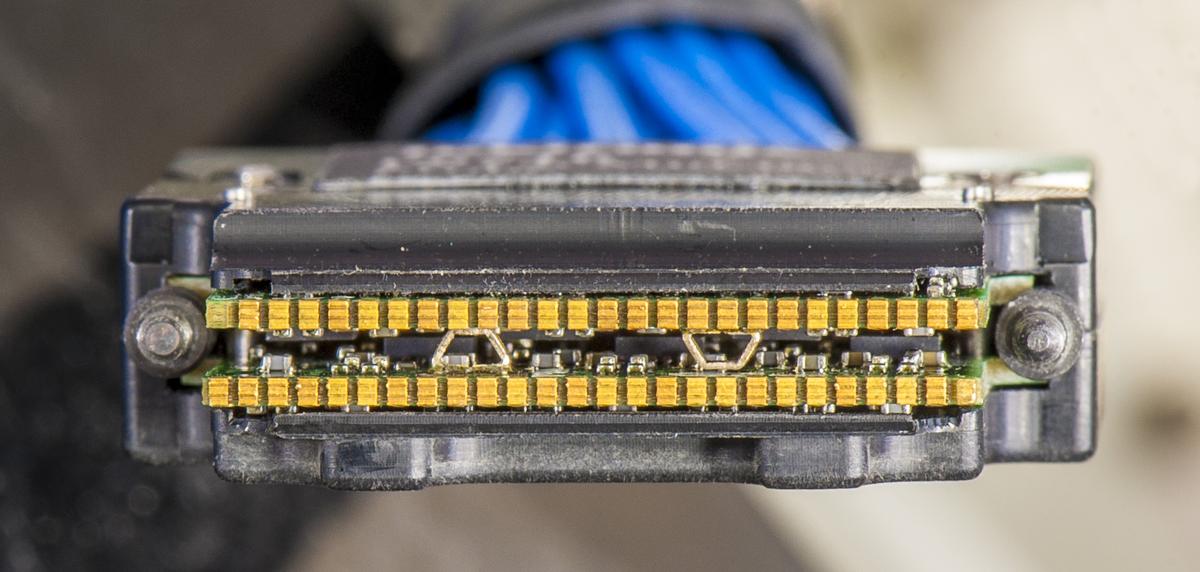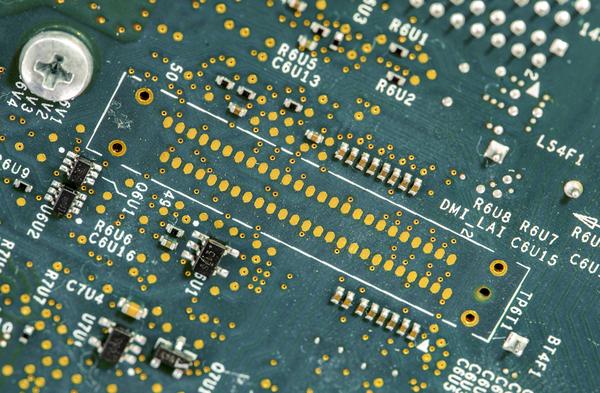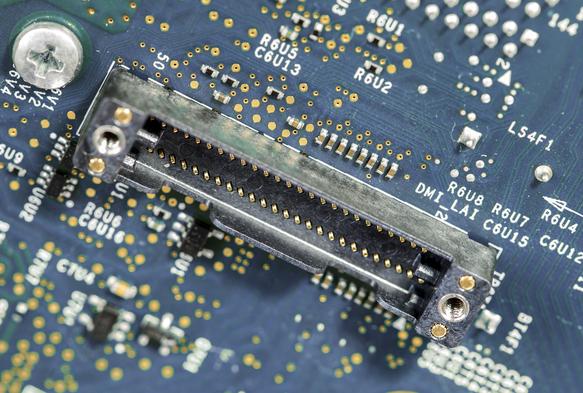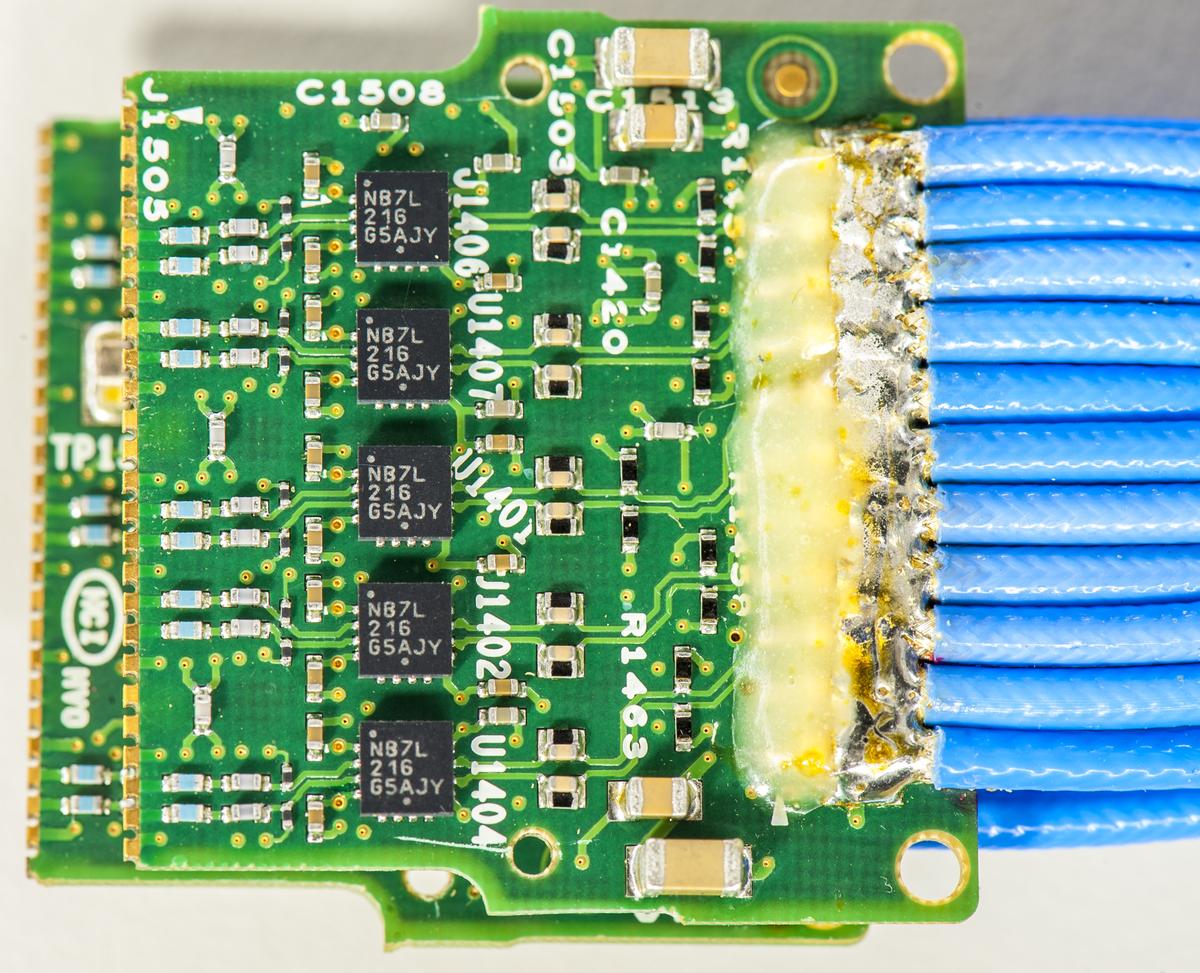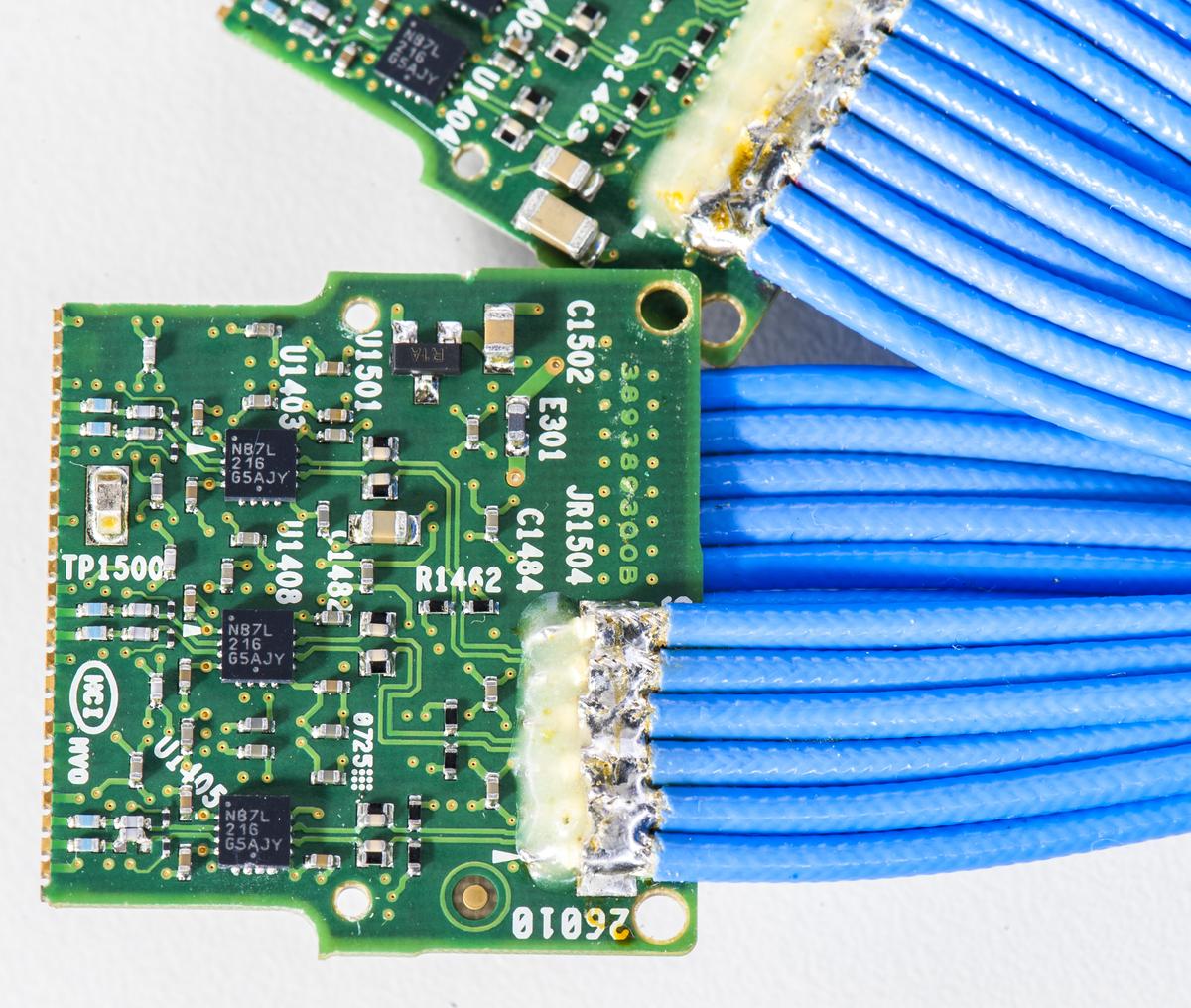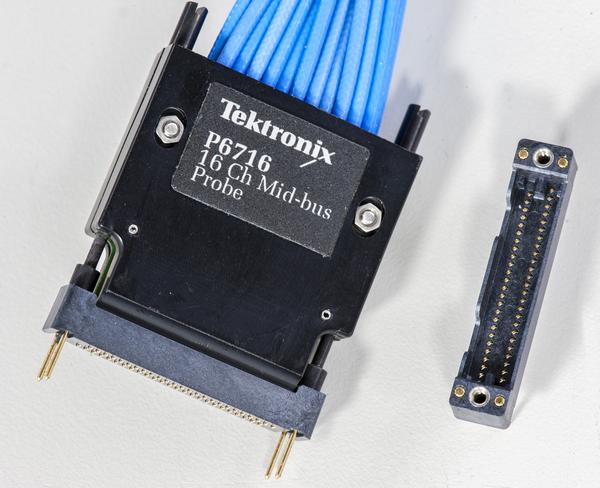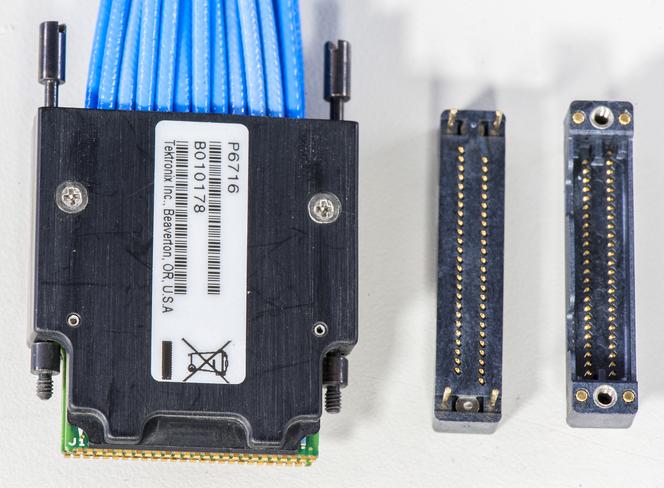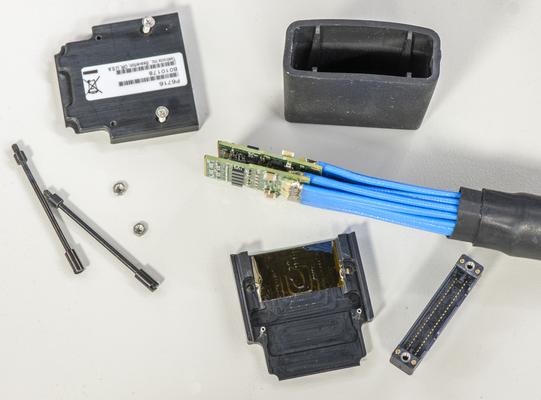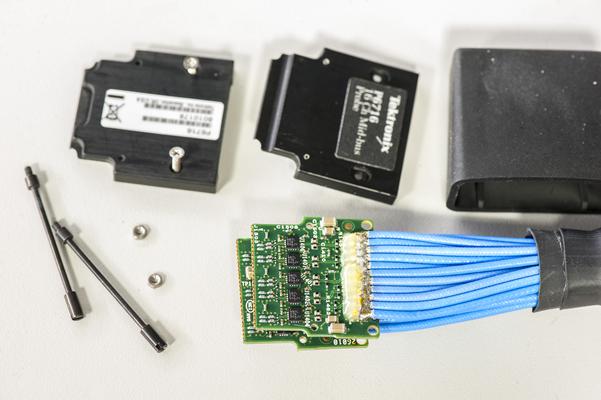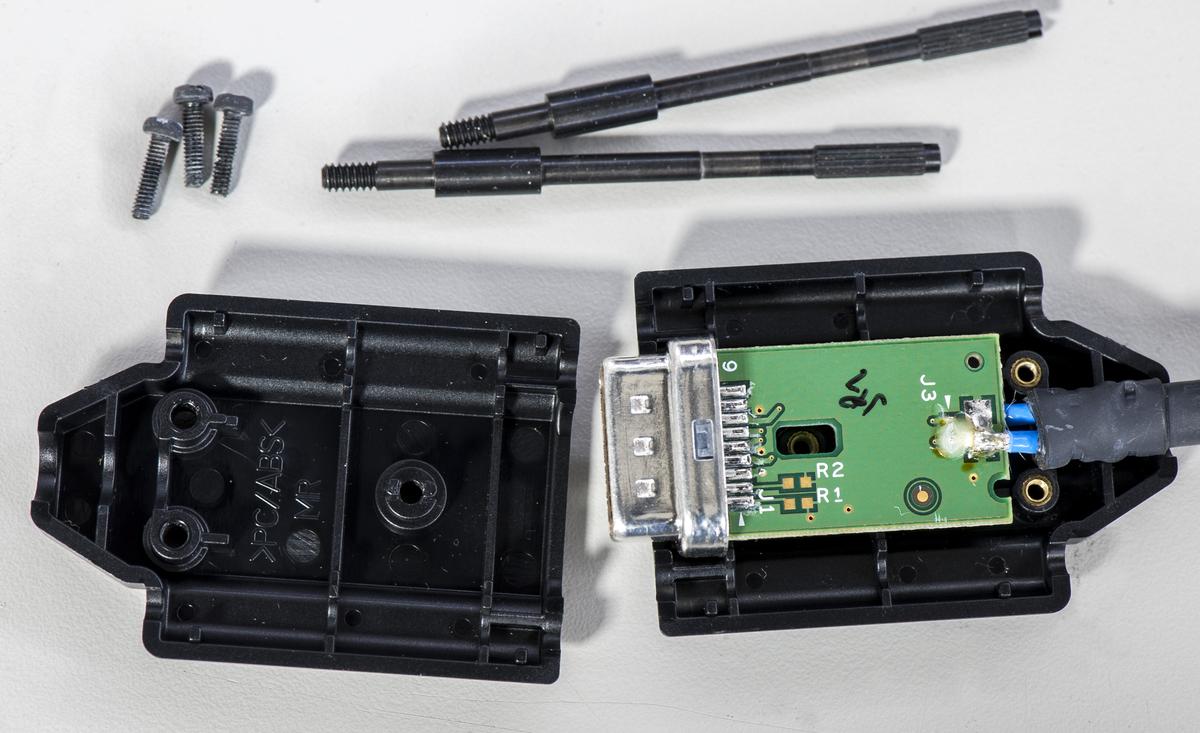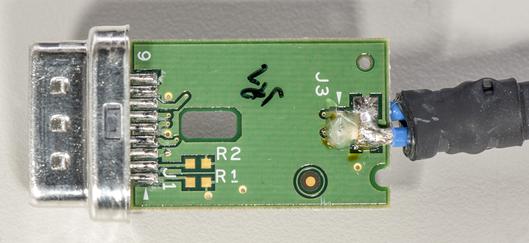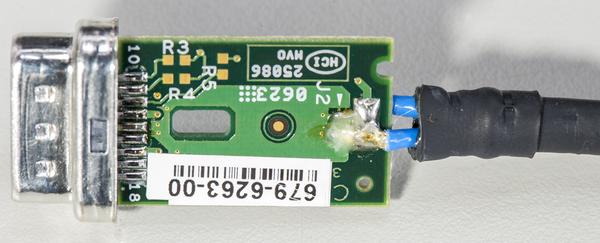Contents
- Introduction
- Disclaimer
- Manuals and service information
- TLA7AC4 module teardown
- TLA7SA16 module teardown
- P6716 PCIe 16-channel Midbus probe system
- Options
Tektronix TLA6200 series logic analyzers reached end of life in 2012, some 6 years ago, so we will use this fact to extract some more life out of this old, but still capable box. Modern replacement, series TLA6400 is significantly redesigned version, using own hardware and chassis, unlike still-current TLA7012 series. Table below shows brief key spec comparison between units:
| Model | Channels | State performance | Timing performance | Depth | Resolution | Reference cost(base) | Status |
|---|---|---|---|---|---|---|---|
| TLA6201 | 34 | 450 MHz | 8 GHz | 128Mb | 125 ps | $15100 USD | Obsolete |
| TLA6202 | 68 | 450 MHz | 8 GHz | 128Mb | 125 ps | $19100 USD | Obsolete |
| TLA6203 | 102 | 450 MHz | 8 GHz | 128Mb | 125 ps | $22840 USD | Obsolete |
| TLA6204 | 136 | 450 MHz | 8 GHz | 128Mb | 125 ps | $26800 USD | Obsolete |
| TLA6401 | 34 | 667 MHz | 25 GHz | 64Mb | 40 ps | $15100 USD | Production |
| TLA6402 | 68 | 667 MHz | 25 GHz | 64Mb | 40 ps | $19100 USD | Production |
| TLA6403 | 102 | 667 MHz | 25 GHz | 64Mb | 40 ps | $22840 USD | Production |
| TLA6404 | 136 | 667 MHz | 25 GHz | 64Mb | 40 ps | $26800 USD | Production |
| TLA7012 | Frame only, takes 2 TLA7xx modules | $27940 USD | Production | ||||
| TLA7016 | Frame only, takes 6 TLA7xx modules | $33171 USD | Production | ||||
| TLA7AA4 | 136 | 450 MHz | 8 GHz | 32Mb | 125 ps | ? | Obsolete |
| TLA7AC2 | 68 | 450 MHz | 8 GHz | 128Mb | 125 ps | ? | Production |
| TLA7AC3 | 102 | 450 MHz | 8 GHz | 128Mb | 125 ps | ? | Production |
| TLA7AC4 | 136 | 450 MHz | 8 GHz | 128Mb | 125 ps | ? | Production |
| TLA7BB2 | 68 | 1.4 GHz | 50 GHz | 64Mb | 20 ps | $52660 USD | Production |
| TLA7BB3 | 102 | 1.4 GHz | 50 GHz | 64Mb | 20 ps | $67800 USD | Production |
| TLA7BB4 | 136 | 1.4 GHz | 50 GHz | 64Mb | 20 ps | $102630 USD | Production |
| TLA7SA08 | 8 | SERDES 8.0 GT/s | PCIe Gen1/2/3 | 160M | $29882 USD | Production | |
| TLA7SA16 | 16 | SERDES 8.0 GT/s | PCIe Gen1/2/3 | 160M | $39000 USD | Production | |
All prices are module only, probes cost extra!
Disclaimer
Redistribution and use of this article, any parts of it or any images or files referenced in it, in source and binary forms, with or without modification, are permitted provided that the following conditions are met:
- Redistributions of article must retain the above copyright notice, this list of conditions, link to this page (https://xdevs.com/article/sti/) and the following disclaimer.
- Redistributions of files in binary form must reproduce the above copyright notice, this list of conditions, link to this page (https://xdevs.com/article/sti/), and the following disclaimer in the documentation and/or other materials provided with the distribution, for example Readme file.
All information posted here is hosted just for education purposes and provided AS IS. In no event shall the author, xDevs.com site, or any other 3rd party, including Superconductor Technologies be liable for any special, direct, indirect, or consequential damages or any damages whatsoever resulting from loss of use, data or profits, whether in an action of contract, negligence or other tortuous action, arising out of or in connection with the use or performance of information published here.
If you willing to contribute or add your experience regarding instrument repairs or provide extra information, you can do so following these simple instructions
Manuals and service information
SuperFilter Operation and Installation Manual, SN00673 and up, September 21, 2000
- 102 Channel Logic Analyzer with up to 2 Mb Depth
- Up to 200 MHz State Acquisition Analysis of Synchronous Digital Circuits
- 2 GHz Deep Timing Analysis with up to 512K Depth per channel
- MagniVu™ Acquisition Technology Provides 2 GHz (500 ps) Timing Resolution to Find Difficult Problems Quickly
- Glitch and Setup/Hold Triggering and Display Finds and Displays Elusive Hardware Problems
- Transitional Storage Extends the Signal Analysis Capture Time
- Full Range of General-purpose and High-density, Non-intrusive Probes
But before that, we first need to hack obsoleted TLA6204 to make it work with 7-series modules.
Unit as received:
Wow, surprise, it even works :) No fixing required?
Time to take it apart, and see what happens if I try to install my TLA7AA4 module. Actual module (top one) in TLA6204 is actually also very same hardware as 7Ax4 series, but configured differently.
Well as expected, that didn’t work. If I install only 7AA4 then mainframe is detected as TLA620?, as it get confused what module is in.
However service firmware update and option upgrade Tektronix software tools detect 7AA4 correctly, as they supposed to be. So obviously we have software limitation of main TLA app, and if we make it think that mainframe is TLA7012, which is almost same hardware, then 7xx modules should work :).
Take apart:
PCI Interface board with some custom logic and PDN circuits. I suspect this board store identification for the TLA6204, as it have Xilinx Spartan-6 FPGA, some Intel NOR Flash and little SPI EEPROM.
It is also interesting, as other TLA series frames also use the same interface bridge board.
x86 computer is based on Advantech AIM8256G29003E-1 motherboard and Intel Core T7500 processor. We can pimp all that later when everything get sorted.
Controller Intel GME965 GMCH integrated
DDI (HDMI/DVI/DisplayPort) DVI
Graphic Memory Share with system memory up to 384 MB
LCD (TTL/LVDS/eDP) LVDS: Single channel 18/24-bit / Dual channel 36/48-bit
Multiple Display Dual
Form Factor Form Factor mini ITX
I/O COM Port 2 ( 2 x RS-232 )
GPIO 1
Keypad 2
TPM Yes
USB2.0 10
Memory Max. Capacity 4 GB
Socket 2 × 200-pin SODIMM
Technology DDR2 533 / 667 MHz
Processor BIOS AMI SPI 16 Mbit
Chipset Intel GME965, ICH8M
Core Number 2 / 1 / 2
CPU Intel Core 2 Duo T7500 / Intel Celeron M 550 / Intel ULV Core 2 Duo U7500
CPU TDP 35 W / 31 W / 10 W
Frequency 2.2 GHz / 2.0 GHz / 1.06 GHz
L2 Cache 4 MB / 1 MB / 2 MB
Storage CompactFlash Supports CompactFlash Type I/II
IDE 1
SATA 3 x SATA II (Max. Data Transfer Rate 300 MB/s)
Operating System Linux Yes
Microsoft Windows Yes
SUSIAccess Yes
Environment Non-Operational Temperature -20~ 70° C
Operational Temperature 0 ~ 60° C (32 ~ 140° F)
Vibration Resistance 3.5 Grms (non OP)
Power Connector ATX20P
Power Type ATX, AT
Ethernet Connector RJ45 × 2
Controller GbE1: Realtek RTL8111E; GbE2: Realtek RTL8111E
Speed 10/ 100/ 1000 Mbps
Audio Audio Interface HD Audio
CODEC Realtek ALC892, High Definition Audio (HD)
Connector 3 (Mic-in, Line-out, Line-in)
Watchdog Timer WatchDog Timer Yes
Certification EMC CE, FCC
Expansion PCI 1
Physical Construction with CPU cooler design
Dimension (mm) 170× 170 mm (without heatsink)
Weight 1.04 kg (1.72 lb), weight of total package
TLA7AC4 module teardown
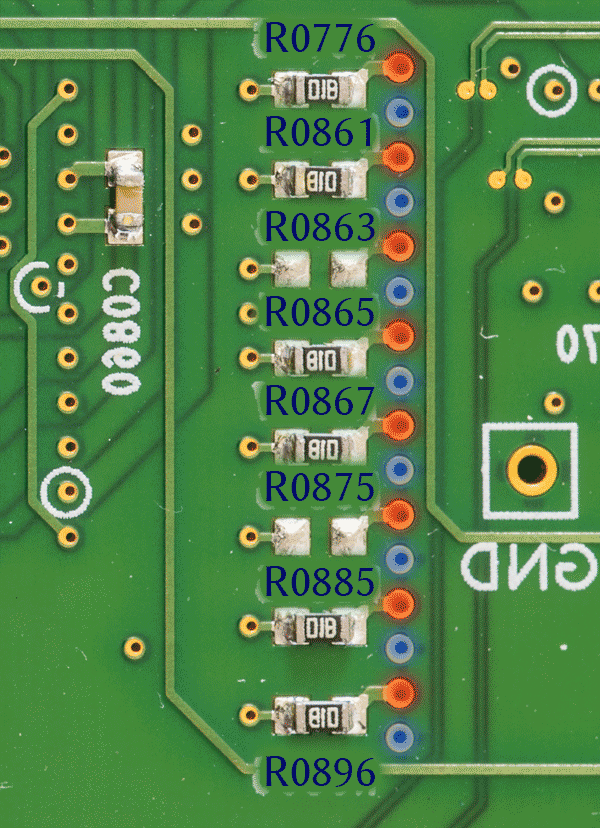
TLA7BB4 module teardown
We also tried to install TLA7BB4 module into very old TLA714 mainframe, which was previously modified to operate Windows 2000 with TLA Application verison 5.1. TLA7AA4 module, while not officially supported in such configuration was found to work normally, but no such luck with modern TLA7BB4.
TLA714 Mainframe actually does detect 7BB4, and even let user to configure, but right after the first acquisition application crashes and module access orange LED starts to blink in anger.
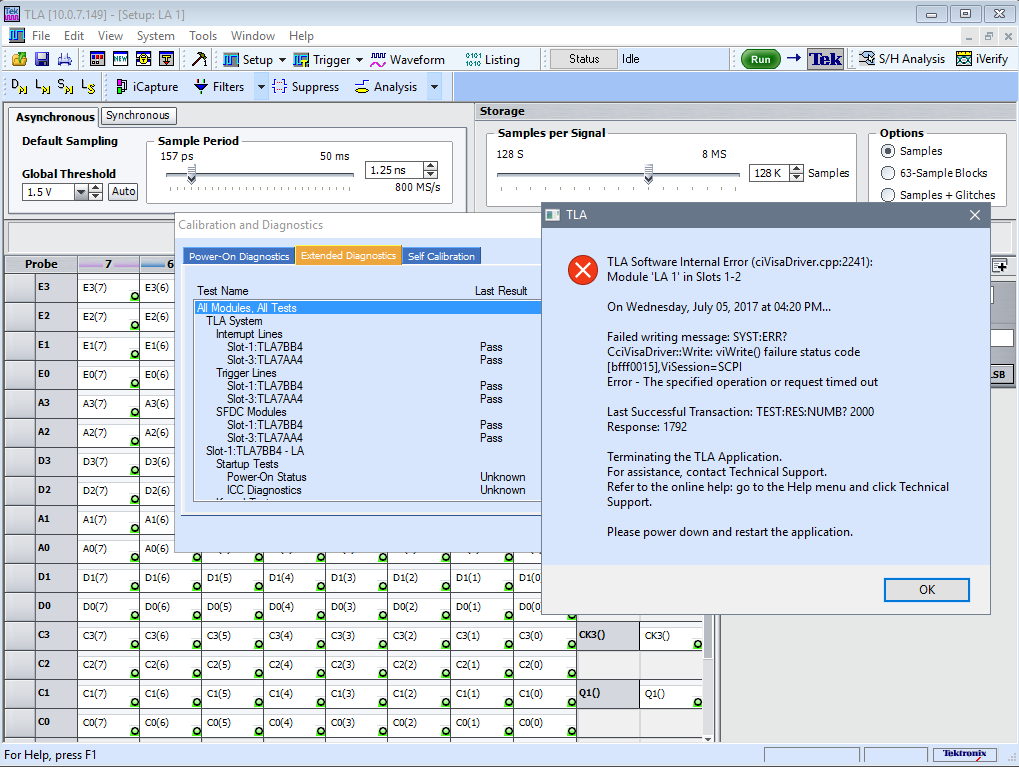
Module also locks up during self-test procedure execution. So no luck here, TLA7BB4 cannot work in older mainframe and require TLA7012/TLA7016 frame.
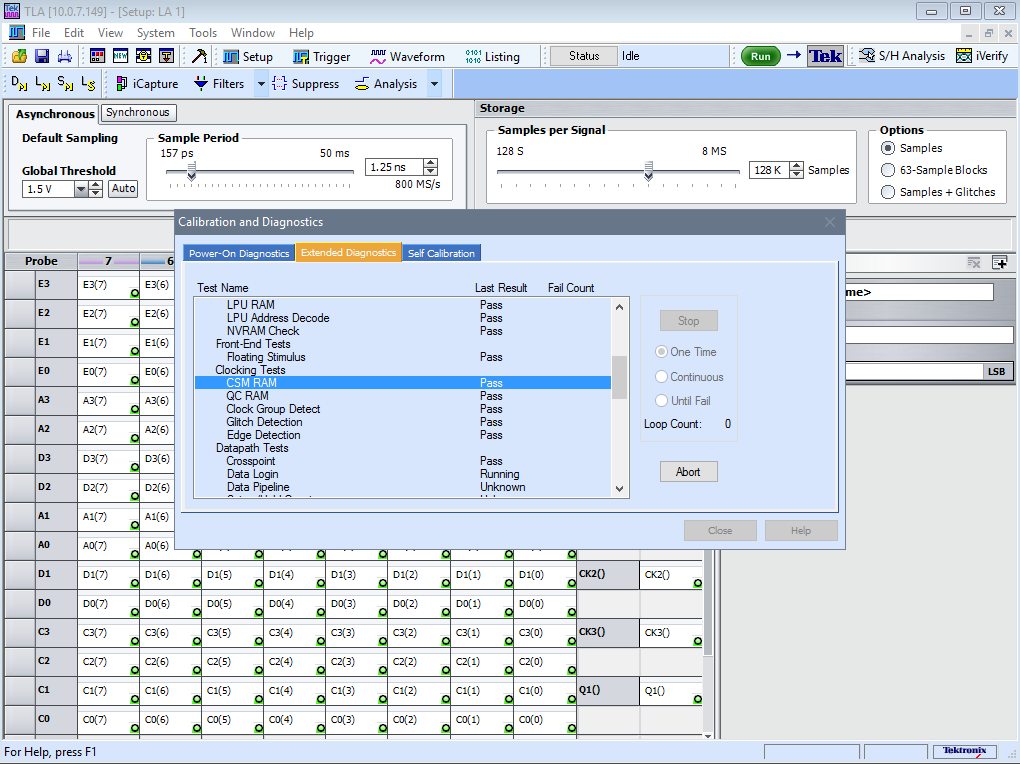
Tektronix TLA7SA16 Serial analyzer module
The challenge of transferring high-speed serial interface signals like PCI-express Gen 3 from system under test to the logic analyzer starts at connectors. Tektronix opted to use W.L. Gore RF headers, rated for 15 GHz bandwidth with 8 inputs per port. RF connectors belong to Gore’s UHD 0.12” pitch connector system and provide 50 Ω impedance interconnect. Actual connectors are very similar to existing Gore HFN1163-G but have threaded #2-56 inserts like Gore HFN1460. There is also right-angle version like Gore HFN1074
These connectors aren’t cheap, with listed price around $130 USD a piece. One of the reasons why multi-way RF connector is used instead of traditional SMA or 2.92mm RF connectors is controlled phase and delay matching between lanes, so overall PCIe link timing can be less troublesome to maintain.
HUBER+SUHNER also have similar connector style MXP-S50 series rated for 22.5 GHz of bandwidth. But this is different connector and not compatible with Gore UHD.
Front end architecture is rather “simple”, with Texas Instruments TLK1101E 11.3 Gbps retimer/redriver to recover PCIe signaling after the probe, followed by Micrel/Microchip SY58023U 2-way cross-switch (to allow lane reversal/switching). Then recovered and correctly ordered PCIe lanes go into custom Tektronix BGA ASIC that handles protocol capture and decoding.
After installation, module was correctly recognized and passed all internal diagnostics without single error. Firmware running on the module is PCIe 1.2.65, latest version already.
Memory depth is maximum 160Msamples, and support for three current PCIe Gen1/2/3 speeds.
Obviously without live link it will not be able to capture anything, so this to be updated once I get a probing system.
P6716 PCIe 16-channel Midbus probe system
Just like with any high-end oscilloscope or logic analyzer quest on getting just analyzer is not over, until one get set of matching high-end probes. Often probes, especially with multi-GHz bandwidth can cost many times more than acquisition hardware itself. There is a lot of technology invested in the probe systems to maintain signal integrity and timing at the picoseconds scale.
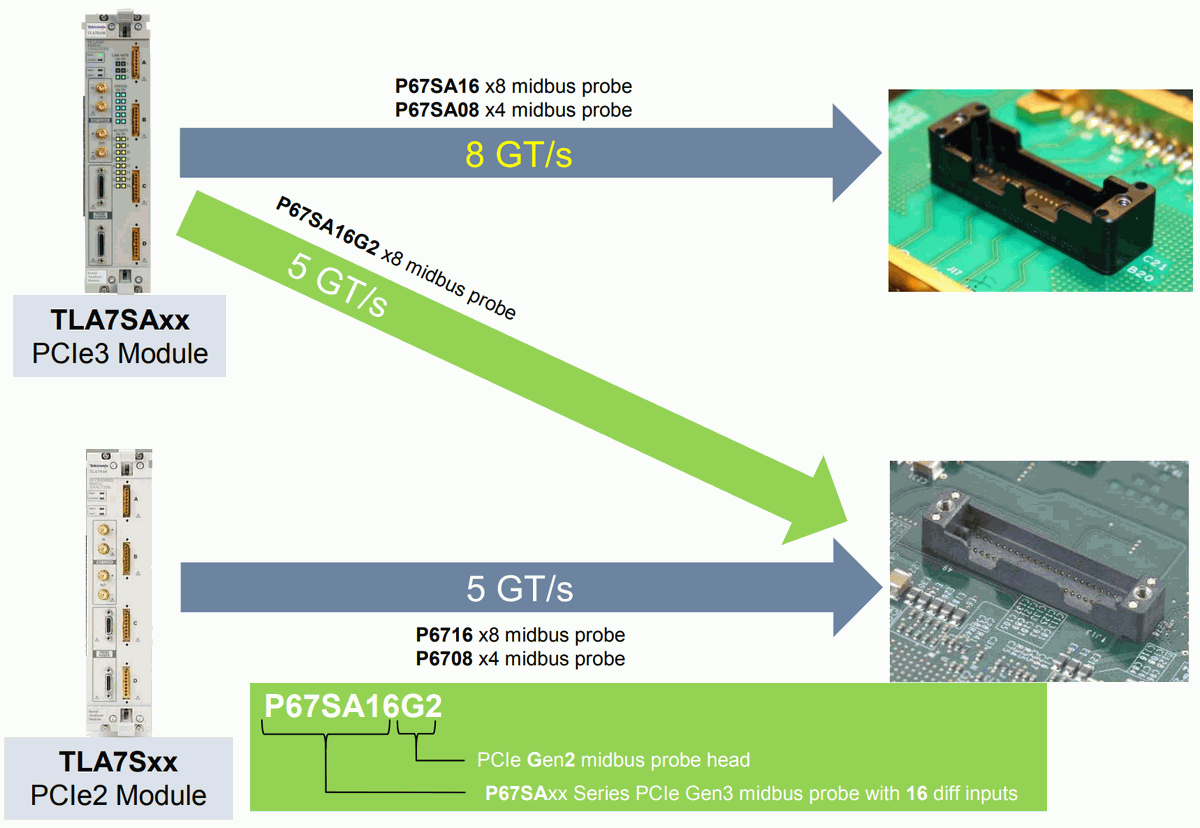
Also fast serial links like PCI-express are point to point interfaces. In practice that makes any stub or test structures or cables connected on the channel act as impedance mismatches and cause all kinds of nasty stuff. Reflections, signal integrity problems, loading issues and ringing are just beginning on probing challenges.
Correct probes for TLA7SA16 module are P67SA01SD (1-channel PCIe Gen3 active solder-down probe), P67SA08 (8-channel PCIe Gen3 active midbus probe), P67SA16 (16-channel PCIe Gen3 active midbus probe) and their interposer variants. These probes cost over $10K USD due to small market, expensive manufacturing and high-speed components used. Gore is the OEM manufacturer for these Tektronix probes, with their extensive RF/mmWave interconnect experience.
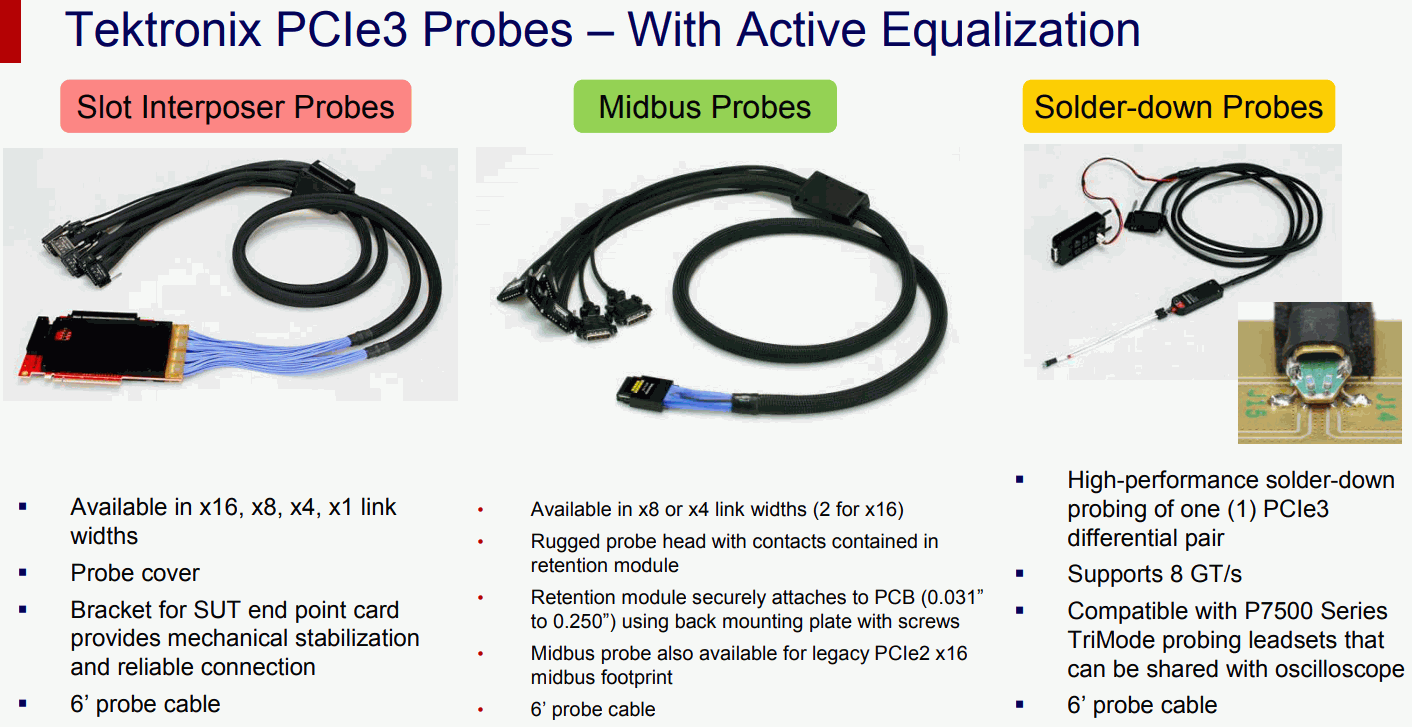
Since this is educational project with limited budget, we opted alternative path to get actual probing system for TLA7SA16. That is to buy used older PCIe Gen1/Gen2 probe, like Tektronix P6716 and hopefully make it work together with modern TLA7SA16.
The key difference from scarce available documentations listed in table below.
| Feature | Old P6716 16-ch MidBus probe | P67SA16 16-ch MidBus probe |
|---|---|---|
| Probe type | Active probe for TLA7S16 analyzer | Active probe for TLA7SA16 analyzer |
| Rated PCI-express speeds | Gen1/Gen2, up to 5.0 GT/s | Gen1/Gen2/Gen3, up to 8.0 GT/s |
| Interconnect | Gore microcoax rated for 20 GHz | |
| Probe power | +3.3V from Molex TDP 18-pin | =. +3.3V from Molex TDP 28-pin ? |
| Electronic ID | None | I2C EEPROM |
ON Semi NB7L216 is a differential receiver/driver with high gain output targeted for high frequency applications, with data rates 12Gbps and above. Each of these chips is over $40 USD in retail. Evaluation board datasheet is quite interesting read on it’s own.
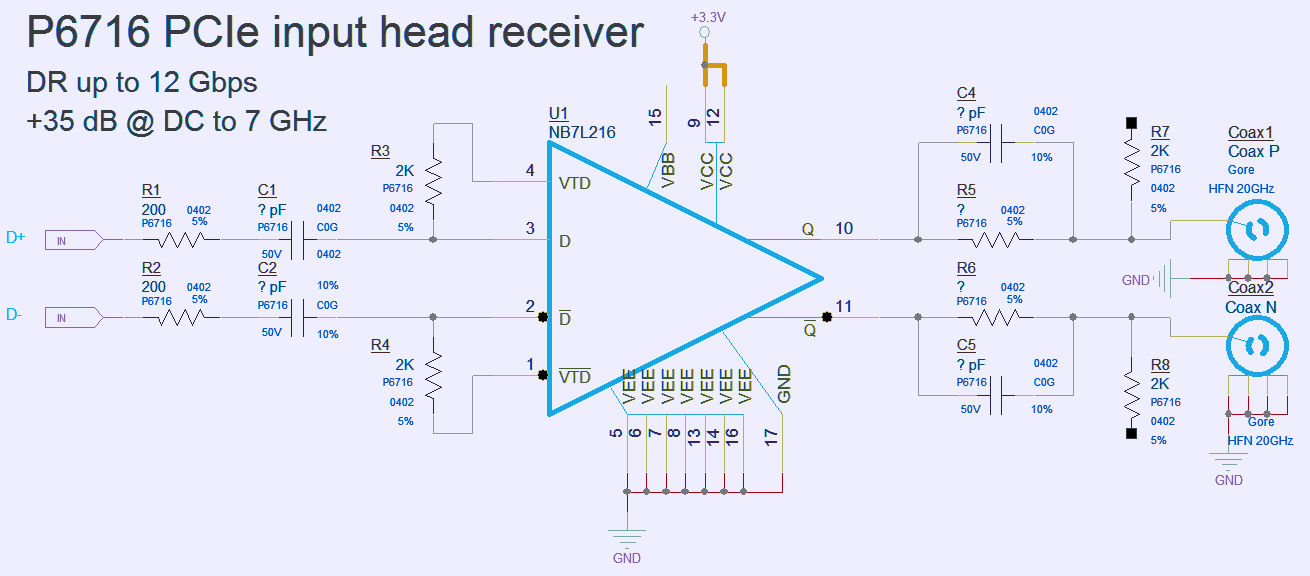
ftp://ftp.xdevs.com/Tektronix/P6716/749603018_sd.pdf
Conclusion
This TLA system serving our digital and mixed signal design purposes well, and will continue to be main tool for troubleshooting and debug in modern systems.
Discussion about this article and related stuff is welcome in comment section or at our own IRC chat server: irc.xdevs.com (standard port 6667, channel: #xDevs.com). Web-interface for access mirrored on this page.
Projects like this are born from passion and a desire to share how things work. Education is the foundation of a healthy society - especially important in today's volatile world. xDevs began as a personal project notepad in Kherson, Ukraine back in 2008 and has grown with support of passionate readers just like you. There are no (and never will be) any ads, sponsors or shareholders behind xDevs.com, just a commitment to inspire and help learning. If you are in a position to help others like us, please consider supporting xDevs.com’s home-country Ukraine in its defense of freedom to speak, freedom to live in peace and freedom to choose their way. You can use official site to support Ukraine – United24 or Help99. Every cent counts.
Modified: June 11, 2025, 3:40 a.m.

